

Can’t settle down? Why your dog is restless and can’t get comfortable
Is your dog acting restless and pacing or panting? Watching your dog act uncomfortable can be alarming and upsetting. If your dog is acting unsettled and uncomfortable it can be due to a number of possible causes. The most likely causes for restless behavior in dogs: senility changes, abdominal discomfort, musculoskeletal pain, anxiety or difficulty breathing.
In this post I will explain distinguishing features for each of these causes. This will help you determine what may be the root cause of your dog’s behavior and how best to help your dog.
Table of Contents
Canine Cognitive Dysfunction can cause nighttime restlessness
Senility is caused by aging changes to the brain which affect cognitive abilities. These age related brain changes affect brain functioning and cause subsequent behavior changes. In dogs that are 11-12 years old as many at 28% of dogs develop cognitive dysfunction. This number rises to almost 68% of dogs that are between 15-16 years of age.

Senilife is available on Amazon. This product contains a number of specialized antioxidants that slow and reverse brain aging. It is available without a prescription and is highly rated.
She is back to sleeping through the night, very energetic and playful during the day, knows which way the door opens and much more. Her cognitive function has improved drastically, she’s well-rested and always ready to play with her toys. We are still on our first bottle of Senilife, but this is definitely worth a shot if you’re dog is experiencing a cognitive decline. Review on Amazon
To diagnose cognitive dysfunction syndrome (CDS), medical causes should be excluded first.
A variety of cues related to behavior are evaluated. Signs of disorientation in a familiar environment, changes in social interactions, sleep-wake cycles, house training and activity can all be clues to CDS.
Repetitive behavior and aimless wandering and restlessness are prominent changes in senior dogs with cognitive decline. People who suffer from Alzehimer’s disease often develop movement disorders with restlessness, gait impairment and tremors.
Older dogs with senility changes spend more time involved in aimless activity and have higher locomotor activity than younger dogs. The more severe the cognitive impairment, the more time is spent in these activities.
Twenty percent of the body’s total oxygen is consumed by the brain. As dogs age, protective mechanisms to reduce oxidative damage to the brain are less effective. Oxidative damage to the brain is associated with cognitive decline in dogs.
There are a couple of therapeutic prescription diets designed to help dogs with cognitive improvement. The first therapeutic diet , Hills B/D by Science Diet, has shown proven benefit in clinical studies. B/D is rich in antioxidants and contains flaxseed, carrots,spinach, tomato, alpha-lipoic acid, vitamins E, C and B12, beta carotene and several amino acids.
Dogs with cognitive dysfunction can improve with a diet supplemented with medium chain triglycerides
The second prescription therapeutic diet is called Neurocare Diet and is made by Purina. This diet is formulated with medium chain triglycerides. Long term supplementation with medium chain triglycerides has been shown to improve cognitive function in dogs. Diets supplemented with medium chain triglycerides (MCT) increase ketone levels in the blood. Ketones are the preferred energy source for brain function.
Dogs given a diet supplemented with 5.5% MCT for 8 months performed significantly better on cognitive tasks than the control group.
Purina’s Neurocare diet and Hill’s B/D’Diets both require a prescription from your veterinarian. This food marketed by Purina also supports cognitive function in older dogs and is supplemented with medium chain triglycerides (MCTs): Purina One Vibrant Maturity 7+ Senior Formula
Other ways to improve cognitive function in older dogs
Exercise and brain games.
Focusing on providing more exercise during the day (to suit their physical capacity) and working with your dog 30 minutes a day to provide mental stimulation during the day can also be helpful to help maintain and improve cognition in senior dogs.
Having your dog “hunt” for food by placing the kibble into a food puzzle or snuffle mat helps brain engagement. Working with your dog to learn “tricks” and practice exercises such as settling on a mat can all be great brain games.
Using calming supplements for nighttime restlessness in your dog
The use of calming supplements at night can help encourage your dog to rest at bedtime. Supplements such as Solliquin or Anxitane and Composure all contain L-Theanine and are available on Amazon. L-Theanine is an amino acid that helps lower anxiety. Anixtane contains only L-theanine while Composure and Solliquin contain a few other natural compounds for anxiety relief.
Read this article for more tips on managing canine anxiety
Anxitane: L- theanine
Composure : L-theanine plus Colostrum Calming Biopeptide, Vitamin B1 and Shoden extract
Soll iquin: L-theanine, Whey protein and extracts of Magnolia and Phellodendron
Another calming supplement good for use at bedtime is melatonin. Melatonin has been studied to be helpful in lowering doses of premedication drugs needed in dogs prior to surgery. It has also been found to be helpful to lower anxiety in fearful dogs. The usual dose given to dogs is 0.1mg/kg rounded up to the nearest tablet or half-tablet size. This should be given 30 minutes before bedtime.
Most melatonin tablets come as 1mg , 2.5mg, 3mg, and 5mg tablet sizes
Chart for the amount of melatonin to give a dog based on weight
Some behaviorists use a benzodiazepine like lorazepam or a serotonin modulator like trazodone to help older, senile dogs settle and have a more restful night. If your senior dog also has arthritis pain or discomfort using gabapentin at night can help ease discomfort and also provide mild sedation to encourage relaxation.
A few other simple adjustments that can be helpful are providing a night light to help your senior dog see where they need to go at night, a heating pad to rest on if it’s cold in the winter time and a small easily digestible snack at bedtime.
Canine restlessness due to abdominal pain or discomfort
Restlessness in your dog may be due to pain or discomfort. A common source of discomfort is abdominal pain. One of the most serious abdominal emergencies we see in veterinary medicine is a condition called bloat.
Bloat and GDV in dogs causing abdominal pain and discomfort
Bloat happens when the stomach dilates with gas, fluid and food. The stomach can dilate like a balloon and this pressure can be very uncomfortable. This pressure within the stomach makes laying down difficult. A life threatening complication of bloat is when the stomach then twists on its axis . This twist cuts off circulation as the caudal vena cava and portal veins are compressed. This causes shock, low blood pressure and severe lack of oxygen to the body. This condition is called gastric dilatation and volvulus (GDV).
Symptoms of GDV include a sudden history of restlessness, abdominal distension, retching, hypersalivation, collapse and trouble breathing. The abdomen has a tympanic quality from the gas distension of the stomach. Dogs that have delayed treatment or recognition of these symptoms will progress to have a fast heart rate and poor pulse quality. They will start to breathe quickly and develop pale mucous membrane color.
Dogs at risk for GDV
GDV happens most commonly in deep chested breeds of dogs that weigh greater than 60 lbs. The breeds at greatest risk for GDV are Great Danes, Saint Bernards, Weimaraners, golden retrievers, German shepherd dogs, wolf hounds and bloodhounds. The breed with the highest incidence of GDV is the Great Dane.
Dogs with a fearful personality are unfortunately at 2.5 times greater risk for developing GDV. Rapid eating, eating only one large meal per day and restricting water before and after meals can all increase risk of GDV. In Giant breeds only, eating from a raised feeding bowl also increases risk of GDV.
Other causes of belly pain in dogs
More common causes of abdominal pain are maldigestion, gas, acid reflux or inflammation of the pancreas. Concomitant symptoms of loose stools, decreased or no appetite, vomiting or lethargy would also likely be present.
Down dog position in your dog indicates extreme abdominal pain
A posture that indicates extreme abdominal pain is the down dog position. This is when your dog stretches out his/her front legs on the floor and pops his hips up. It is also called the prayer position. The most common disease that is synonymous with this posture is pancreatitis. The pancreas is an organ that secretes digestive enzymes.
The pancreas can sometimes become inflamed and cause a lot of abdominal discomfort. So, if you see your dog alternating between pacing and practicing this posture, you should definitely bring him/or to the veterinarian for evaluation and treatment
The best way to diagnose pancreatitis is with an ultrasound of the abdomen to visualize that organ and determine if it looks inflamed.
Treatment for pancreatitis is based on supportive care to reduce pain, providing plenty of fluids and feeding a low fat diet. Diets high in fat trigger the pancreas to release digestive enzymes and this can worsen inflammation.
Dogs at risk for pancreatitis
Chronic pancreatitis can cause chronic pain in dogs and has increased prevalence in the English Cocker Spaniel. Dogs over 7 years of age are at increased risk of acute pancreatitis. Terrier and non sporting breeds appear to be at higher risk for developing acute pancreatitis than other breeds. Many dogs also have concurrent diseases such as diabetes, Cushings, chronic kidney disease, cancer, heart failure and autoimmune diseases. Some dogs develop acute pancreatitis following recent medication use or abdominal surgery.
Dogs at increased risk for pancreatitis are: Dachshunds, Poodles, Cocker Spaniels, Fox Terriers and sled dogs.
Canine restlessness to due reflux or ulcers
Trouble getting settled as night may be due to nighttime esophageal reflux. Symptoms can be panting, pacing, hypersalivation and regurgitation.
If your dog has acid reflux, an antacid like Prilosec (omeprazole) can be given at 1 mg/kg once to twice a day. A prescription drug called metoclopramide given 30 minutes before meals and at bedtime can also help protect against reflux. Finally, a small meal at bedtime can help reduce extra acidity at night.
Gastric ulceration and bleeding in dogs can happen with recent use of NSAIDS ( non steroidal anti-inflammatory medication, certain gastrointestinal and pancreatic cancers, and inflammatory bowel disease.
Orthopedic or joint pain causing restlessness and discomfort in your dog
Another possible cause of restlessness and difficulty getting settled and in a comfortable resting position is musculoskeletal pain. This can be due to arthritic changes causing pain particularly when lying down or getting up. It may hurt to lay on harder surfaces. Providing your dog a comfortable resting spot is of course helpful. The problem is some larger breed dogs get hot easily and prefer to avoid their squishy beds. You may want to buy a hammock bed for your large breed dog. These are slightly off the ground and allow for more air circulation and a cooler resting spot. No slip treads on the floor like foam puzzle mats or yoga mates can help a dog feel more confident navigating around the house if they have pain and weakness and provide some cushion for the dog that avoids a bed.
Some dogs can develop acute back pain.Certain dog breeds such as French Bulldogs, Dachshunds, Pekingese can develop degeneration of their intervertebral discs and predispose them to acute back pain. Other dogs in this category (chondrodystrophic breeds) are Beagles, Basset Hounds, Cocker spaniels and Pembroke Welsh Corgis.
This article explains more about how to determine if your dog has back pain or possibly a herniated disc and how to treat and prevent back pain.
In non-chondrodystrophic dogs, some dogs can develop fibrous changes within their discs causing back pain. This typically occurs later in life at age 7 or older.
Signs of and treatment for dog back pain
Dogs with neck or back pain will yelp randomly when moving into certain positions that trigger their neck or back pain. If they have neck pain you may find that they guard their neck and won’t raise their neck above a certain level. Dogs with neck or back pain often will stop jumping up and down off furniture. They may be more quiet and not move around as much.
Treatment for neck or back pain often relies on giving anti-inflammatory pain relievers like a non steroidal anti-inflammatory medication or combining steroids with a pain reliever that is good at targeting nervous system pain like gabapentin. Occasionally muscle relaxants are prescribed to stop spasming muscles that can occur in the muscles supporting the neck or back.
Difficulty breathing in dogs causing trouble getting comfortable
Finally, another cause of discomfort and trouble getting comfortable in a laying down position is any disease in the chest that is causing difficulty breathing well at night.
Some dogs with heart disease may find that they struggle more to breathe well at night in a restful position. Dogs that have an enlarged heart from heart disease can compress their intrathoracic trachea and trigger coughing in certain resting positions. These dogs may have to raise their head to breathe more easily.
If your dog has excess fluid in their lungs or around their lungs, certain resting positions will further collapse their lungs and cause discomfort when trying to rest.
If you suspect breathing problems in your dog
f you suspect your dog may be having trouble breathing you should start by counting a resting respiratory rate. A normal respiratory rate is under 40 breaths per minute. If you see aresting breathing rate rise above this value, it suggests they are working harder to breathe.
A trip to the vet is always recommended for any breathing concerns. Your veterinarian will listen carefully to your dog’s heart and lungs to determine if there is a murmur present or any sounds of congestion in the lungs. A chest x-ray can be very helpful to measure the heart size and evaluate the health of the lungs and look for any disease in the lungs or fluid in the chest cavity.
Anxiety in your dog causing difficulty settling down
Anxiety is often at the root of difficulty settling down. Anxious dogs (just like painful dogs) may pant a lot. Even if the behavior is out of character, it’s possible your dog has developed a phobia and is anticipating danger. In these cases, changing the context around nighttime might be helpful to break up the routine. Perhaps you can try sleeping in a different room in the house. Anti-anxiety medications can also be useful to “melt” away the anxiety and help your dog to settle down.
Tricyclic antidepressants are often selected or a selective serotonin reuptake inhibitor (SSRI) like Reconcile. Benzodiazepines like lorazepam can be given with these drugs at nighttime. If you suspect your dog is more sensitive to sounds or reacting to nighttime sounds, a white noise machine can make a difference.
A dog appeasing pheromone collar like Adaptil can diffuse calming pheromones to help your dog relax . If you prefer not to use a collar, a plug in diffuser is available too. A good place to start is by using Adaptil and providing a calming supplement with L-theanine (like Anxitane, Composure or Solliquin).
If your dog is still unsettled and anxious after implementing a few of these suggestions, your best bet is to work on a plan with your veterinarian or a boarded veterinary behaviorist.
This article has lots of great information about how to diagnose and treat anxiety in your dog.
Conclusion: what is causing your dog to be restless and unable to settle down?
The top 5 reasons for your dog’s restlessness and inability to get comfortable are : senility changes, abdominal discomfort, musculoskeletal pain, anxiety or difficulty breathing.
I hope this article has helped you understand how to better decipher what may be the root cause of your dog’s behavior so you can create a plan to help your dog relax again.
Nicole Cohen, DVM DABVP
Recent Posts
Itching, hair loss and tiny scabs in cats: miliary dermatitis
Occasionally, my feline patients come in for multiple small scabs on an area of their body called miliary dermatitis. Oftentimes, there is accompanying hair loss and sometimes itching. This...
Causes of and treatment for stud tail in dogs (with pictures)
Stud tail is the nickname for the skin condition that can cause a focal bald spot on the top of the tail. This bald spot is typically located a few centimeters away from the base of the...
- Health and Nutrition
- Training and Behavior
- Grooming and Care
- Breeds and Adoption
What to Do with a Stray Dog: A Second Shot At Life

Written by Tamsin De La Harpe

It can be overwhelming to know what to do with a stray dog. As animal lovers, you all want to help dogs who are in need of a home. In this article, you will provide some guidance on how to handle the situation and what steps to take in order to ensure the safety and well-being of the dog.
When dealing with a homeless dog, your safety and the safety of the dog should be your top priority. Remember that the dog may be scared or aggressive, so it is important to approach slowly and calmly. In some cases, it might be necessary to involve local authorities or animal control, especially if the animal is in a bad condition.
The journey of assisting a lost dog can be both challenging and incredibly rewarding. We have used lost dog manuals and expert advice to help you find the best home for the dog, whether in another home or your own. As someone who lives in a rural area, I also deal with rescued feral or abandoned dogs regularly, and will relate the story of Penny, my most recent rescue and what I did with her.
So, What Should I Do With A Stray Dog?
The first thing to do is to approach the dog cautiously. If the dog seems friendly, you can coax it over to you with some food or treats. Once you have the dog’s trust, you can check for identification tags or take it to a local vet or animal shelter to see if it has a microchip. If the dog does not have any identification, you can take steps to find its owner, get a rescue organization, or consider adopting it yourself.
We’ve all watched YouTube or TikTok rescue videos that left you in tears on a random Tuesday afternoon at work. Maybe it’s a story of a dog with a happy ending that found a forever home or a dog that battled a hard life to the very end. No matter what, when you hold this dog’s life in your hands, you want to do the right thing.
If you’re sure you’re dealing with a lost dog and not one that was born or raised in the streets, our linked article has a different guide for that. However, it’s important to make sure you are prepared for the responsibility of owning a dog and have the resources to provide for its needs.
It’s important to remember that taking in a homeless dog is a serious responsibility and should not be taken lightly.
Check out this heartwarming transformation:
@keepingfinn Before/After, 2 years later… Notice the change in body language, eye contact, and confidence… Until now, this was a dog that never had peace in his life… It’s amazing what a little love (and some cookies) can do for a dog in need. Can you believe this is the same dog?! A very special thank you to @theanimalpad @losadoptables and the #teamfinn community for never giving up on Simba. And to Simba’s forever mother, Alisha, who loves him for who he is.. ❤️🙏 #fyp #foryou #animalrescue #rescue #dogsoftiktok #beforeandafter #transformation ♬ Pope Is a Rockstar – SALES
The Story of Penny: My Own Rescued Feral Dog

Stumbling upon a homeless dog can tug at the heartstrings of any animal lover, and as someone who’s dedicated their life to caring for dogs, it’s a scenario I’m deeply familiar with. My own most recent experience with a feral dog, whom I later named Penny, is a testament to the unforeseen paths we sometimes walk with these creatures.
Penny was a spectral presence in the fields where my dogs and I wandered on our daily hikes, her feral instincts keeping her just out of reach. Noticing her loneliness, I began leaving food and water, making it a part of my daily ritual, hoping to offer some small comfort to her otherwise harsh existence.
As time wore on, a shift occurred — one that brought us inevitably closer. Penny was injured, a clear signal that our distant relationship had to change for her survival. The pursuit to catch her was painstaking, lasting several hours, but necessity lent me patience. Finally, with a gentle hand and a quiet voice, I managed to slip a leash over her head. It was clear that her spirit was broken, and as she cowered and trembled, the gravity of her plight truly hit home.
Cradling the underweight, tick-infested dog, I brought her into the sanctuary of my home. Her teeth, worn down from a lifetime of survival, and her body, a map of scars and stories (missing two toes on her hind leg), spoke of years of neglect. It was during the vet visit that the weight of her situation truly settled upon my shoulders — Penny had cancer.
The easy road would have been to surrender her to a shelter, but looking into her tired eyes, I understood what I needed to do. Penny wouldn’t spend her final days in a cage, waiting for an end that would come amidst the scent of disinfectant and the echo of barking kennels. I decided then and there that she would know what a home felt like, perhaps for the first time.
Is this the right thing to do for every one who encounters a wandering dog? No. You should never keep a dog just because you feel bad for them and if you are working in rescue, you need to be extremely careful about overextending your resources by trying to rescue and keep too many dogs. But it was the decision I made for Penny.
I notified the local shelters about Penny, ensuring that if someone was looking for her, they would know she was safe and cared for. Under my care, and with the vet’s help, Penny began her palliative treatment, not to cure, but to comfort. Over time, the skittish, haunted look in her eyes faded, replaced with a tranquility that comes with feeling safe.
Today, Penny’s coat is glossy, and her belly is full. She rests comfortably, surrounded by a family who has promised to fill her last days with love. She may not have been mine from the beginning, but she is mine now, and I will ensure that when she leaves this world, she will know she mattered — she was loved.
Steps to Take When Dealing with a Stray Dog

PETA approximates around 70 million homeless dogs and cats at any given time. Most of these are a result of irresponsible breeding habits. However, a good portion of homeless dogs is lost, seeing as 11 to 16% of dogs will lose their way at least once in their life.
Here are a few things you can do to help:
Step 1: Identifying a Stray Dog
When you come across a dog wandering alone, you need to determine if it’s a homeless or a lost pet. Here are some ways to identify a wandering dog:
- Collar and ID tags : A dog with a collar and ID tags is most likely a lost pet.
- Physical appearance : homeless dogs may appear dirty, matted, emaciated, and even injured . They may also have overgrown nails or matted fur. These signs suggest that the dog has been on its own for a while.
- Behavior : dogs on the street may seem scared of you or aggressive when approached. They may be hesitant to approach humans or other dogs and show signs of anxiety like licking and shaking. They may also be scavenging for food or water.
If you’re unsure whether a dog is homeless or a lost pet, it’s best to approach the dog slowly and cautiously. If the dog is fearful or aggressive, it’s best to contact animal control or a local animal rescue organization for assistance.
Step 2: Ensuring Your Safety
When dealing with a lost dog, it is important to prioritize your safety. These dogs can be unpredictable and may pose a risk of injury or disease. To ensure your safety, you recommend following these guidelines:
- Approach the dog slowly and calmly, avoiding sudden movements or loud noises.
- Keep a safe distance from the dog and avoid making direct eye contact.
- If the dog appears aggressive or is growling, barking, or showing its teeth, do not approach it.
- If you do approach the dog, do so from the side rather than head-on, as this can be less threatening.
- Avoid touching the dog unless you are confident it is friendly and approachable.
- If you are bitten or scratched by a street dog, seek medical attention immediately to prevent the risk of infection.
By taking these precautions, you can help ensure your safety when dealing with a feral dog. Remember, it is always better to err on the side of caution when interacting with unfamiliar animals.
Remember that you must also protect your other dogs if you have any. Feral dogs may have severe illnesses like rabies , parvo , kennel cough , and other viral diseases. This is why it’s best not to take them home immediately.
Step 3: Approaching the Dog
When approaching a strange dog, it’s essential to do so carefully and calmly. Here are some steps you can take to approach the dog safely and with the least amount of stress for both the dog and us.
Using Calm Body Language
Dogs can sense fear and anxiety, so it’s important to approach them with calm body language. Avoid making direct eye contact, which can be seen as a threat. Instead, you can look at the dog from the corner of your eye or look away altogether. You should also avoid making sudden movements or loud noises, which can startle the dog.
Offering Food
Food can be a great way to gain a homeless dog’s trust. You can offer the dog some food from a distance and then slowly move closer while continuing to offer the food. This can help the dog associate us with positive experiences. However, you should never force the dog to eat the food or try to grab it away from them.
Leashing the Dog
Once the dog has gained our trust, you can try to leash them. Approach the dog slowly and calmly and offer them a treat while you slip the leash over their head. It’s important to make sure the leash is secure and not too tight. If the dog is hesitant or scared, you should not force them to be leashed and seek the help of a professional.
Securing a stray dog can be a process. Some people even come back several times to establish trust with the dog when they remember you . Some even take months, like this dog:
@kidathepyr I first saw her in July 2020 (but she had been on the streets longer) and she is finally with me in Jan 2022!! #houston #help #rescue #rescuedog #tx ♬ Sparks – Coldplay
Approaching a missing dog can be a delicate process, but by using calm body language, offering food, and leashing the dog with care, you can help ensure the safety and well-being of both the dog and ourselves.
Step 4: Checking for Identification
When encountering a lost dog, one of the first things you should do is check for identification. Here are a few things to check for:
Looking for a Collar
A collar can provide important information such as the dog’s name, owner’s phone number, and address. If you find a tag, call the owner and let them know that you have found their dog.
Checking for a Microchip
If you don’t find a collar, you can check for a microchip. A microchip is a small electronic device that is implanted under the dog’s skin. To find it, gently feel the dog’s skin between its shoulder blades and its neck. Whether or not you find a microchip, take the dog to a veterinarian or animal shelter to have it scanned.
If you cannot find any identification, you can also check for any other distinguishing features, such as unique markings or scars. You can also take a picture of the dog and post it on social media or other lost and found websites to help locate the owner.
Step 5: Contacting Local Authorities
If you have found a dog with no apparent owner, it is essential to contact your local authorities as soon as possible. This can include animal control, the police department, or the local animal shelter. By contacting these authorities, you can help reunite the dog with its owner or ensure that it is taken care of properly.
When contacting local authorities, provide as much information as possible about the dog. This can include its breed, size, and any distinguishing features such as a collar or tags. If possible, take a picture of the dog to share with authorities.
If you are unable to keep the dog until its owner is found, the local animal shelter may be able to take it in. However, be aware that many shelters are often at capacity and may be unable to take in additional animals. Never contact a kill shelter for obvious reasons.
Remember, it is important to act very quickly when dealing with a missing dog . By contacting local authorities and providing as much information as possible, you can help ensure that the dog is taken care of and reunited with its owner if possible. The streets pose the risk of death or injury, so speed is paramount.
Step 6: Taking to a Vet
If you find a stray, it’s important to take them to a vet as soon as possible. This will help ensure their health and safety and can also help you identify the dog’s owner if they have a microchip.
Health Check
When you take the dog to the vet, they will perform a thorough health check. This will involve checking the dog’s eyes , ears , nose, mouth, and skin for any signs of illness or injury. The vet may also take the dog’s temperature and check their heart rate.
If the dog is injured or sick, the vet will provide treatment. This may include medication, surgery, or other interventions. If the dog is healthy, the vet will give them a clean bill of health and may recommend vaccinations.
Vaccinations
Vaccinations are an important part of keeping a dog healthy. When you take the dog to the vet, they will likely recommend that the dog receive several vaccinations. These may include:
- Parvovirus; and
- Bordetella.
The vet will administer the vaccinations and provide you with a record of the dog’s vaccinations. This will be important if you decide to keep the dog or if you need to find a new home for them.
Step 7: Finding a Temporary Home
There are a few options for temporary housing for a homeless dog. One option is to take in the dog yourself. Who knows, it may be a failed foster.
You can also choose a local animal shelter. Many animal shelters have foster programs for dogs without a home, and they can provide them with food, water, and shelter until a permanent home is found.
Another option is to contact local rescue organizations. These organizations often have foster homes available for dogs in need, and they can help find a temporary home for the stray dog.
If you are unable to find a shelter or rescue organization, you may need to find a temporary home for the dog yourself. This can be a friend or family member willing to take care of the dog until a permanent home is found.
It is important to ensure the temporary home is safe and secure for the dog. This means providing them with a comfortable place to sleep, access to food and water, and a secure area to play and exercise.
Step 8: Searching for the Dog’s Family
When you find a lost dog, the first thing you should do is try to find their family. Here are some steps you can take:
- Check for identification like tags and chips .
- Post on social media : Share a photo of the dog on your social media accounts, including any local lost and found groups. Ask your friends to share the post to increase the chances of the dog’s family seeing it.
- Contact local animal shelters : Call or visit your local animal shelters to see if anyone has reported a missing dog that matches the description of the one you found.
- Put up flyers : Create flyers with a photo of the dog, your contact information, and the location where the dog was found. Post the flyers in the area where you found the dog and in nearby neighborhoods.
Remember, it’s important to act quickly when trying to find the dog’s family. The longer you wait, the less likely it is that you’ll be able to reunite the dog with their loved ones.
Adoption or Foster Care
If you decide to adopt or foster a homeless dog, there are a few things you should consider before bringing them into your home.
Preparing Your Home
Before bringing a new dog into your home, it’s important to make sure your living space is safe and comfortable for them. Here are some things you can do to prepare:
- Set up a designated area for the dog to sleep and eat. This is an important step because it’s crucial to let the dog take in and accept your home and choose a place they feel comfortable. Like this dog:
- Remove any hazardous materials or objects from the area.
- Place any valuable or breakable items out of reach.
- Install baby gates to block off certain areas of the house if necessary.
Training the Dog
Training your new dog is an integral part of helping them adjust to their new home. Here are some training tips to keep in mind:
- Start with basic obedience training, such as teaching them to sit, stay, and come;
- Use positive reinforcement, such as treats and praise, to encourage good behavior;
- Be patient and consistent with your training; and
- Consider enrolling your dog in a training class to help them socialize with other dogs and people.
Introducing to Other Pets
If you have other pets in your home, it’s important to introduce them to the new dog slowly and carefully. Here are some tips for introducing your new dog to other pets:
- Keep the new dog on a leash during the introduction;
- Allow the pets to sniff each other from a distance;
- If there are any signs of aggression, separate the pets and try again later; and
- Supervise all interactions between the pets until they are comfortable with each other.
By following these tips, you can help ensure a smooth transition for your new furry friend and make them feel right at home.
It’s also important to remember that not all stray dogs are lost or abandoned. Their owners may have intentionally released some, while others may be part of a feral dog population. In these cases, it may be best to contact a local animal control or rescue organization for assistance.
Frequently Asked Questions (FAQs)
How can you help a stray dog you found.
If you find a lost or homeless dog, the first thing to do is to ensure your safety and the safety of the dog. Approach the dog slowly and calmly, and avoid making any sudden movements. If the dog is friendly, check if they have any identification tags or a microchip. If they do, contact the owner and return the dog to them. If they don’t, take the dog to a veterinarian to check for any health issues and to see if they are microchipped. You can also contact local animal shelters or rescue organizations for assistance.
What are our options if you can’t keep a stray dog?
If you are unable to keep a street dog, there are several options available. You can contact local animal shelters or rescue organizations to see if they can take the dog in. You can also try to find a new home for the dog by posting on social media or contacting local pet adoption agencies. If all else fails, you can contact animal control to take the dog in.
Where can you take a stray dog near us?
You can take a wandering, lost, or homeless dog to a local animal shelter or rescue organization. You can also contact your local animal control agency for assistance.
What should you do if a stray dog approaches us?
If a stray dog approaches you, stay calm and avoid making any sudden movements. If the dog is friendly, try to find identification tags or a microchip to contact the owner. If the dog is aggressive or appears to be in distress, contact Animal Control for assistance.
Is it legal to keep a stray dog as a pet?
In most cases, it is not legal to keep a stray dog as a pet without first attempting to find the owner or contacting animal control. If you find a homeless dog and wish to keep them as a pet, contact Animal Control to see if there are any legal requirements you must meet.
What should you do if you find an injured stray dog?
If you find an injured stray dog, contact a veterinarian or animal rescue organization immediately. Do not attempt to treat the dog yourself, as this can cause further harm.
Final Thoughts
Taking care of a stray dog can be a rewarding experience for both the dog and the person who takes them in. Remember, it’s important to approach the situation with caution and to prioritize the safety of both yourself and the dog.
If you do decide to take in a feral dog, make sure you have the time, resources, and commitment to provide them with the care they need. This includes regular veterinary check-ups, proper nutrition, and plenty of exercise and socialization.
Meet Your Experts

Tamsin De La Harpe
Tamsin de la Harpe has nearly two decades of experience with dogs in rescue, training, and behavior modification with fearful and aggressive dogs. She has worked closely with veterinarians and various kennels, building up extensive medical knowledge and an understanding of canine health and physiology. She also spent two years in the animal sciences as a canine nutrition researcher, focusing on longevity and holistic healthcare for our four-legged companions. Tamsin currently keeps a busy homestead with an assortment of rescue dogs and three Bullmastiffs.
Please SAVE to make app work
- AI Generator
89,510 Wandering Dog Stock Photos & High-Res Pictures
Browse 89,510 wandering dog photos and images available, or search for lost dog to find more great photos and pictures..
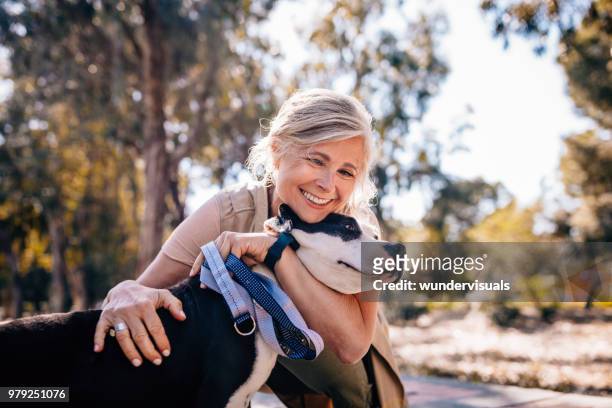
Why is my old dog wandering aimlessly and what is the best explanation for it?
Introduction: Understanding Old Dog Behavior
As dogs age, they undergo numerous changes in their physical and mental health that can affect their behavior. One common behavior that pet owners may observe in their aging dogs is wandering aimlessly. This can be concerning for pet owners who may wonder why their dogs are wandering and what they can do to help them.
In this article, we will explore some of the possible reasons behind why old dogs wander and the best explanation for it. We will also provide some tips on how to care for your aging dog and help them stay healthy and happy in their golden years.
Aging Dogs and Their Wandering Habits
As dogs age, they may start to wander more often than usual. This can be due to a variety of factors, including changes in their physical health, cognitive decline, anxiety or fear, and environmental factors.
Older dogs may also become more forgetful and may wander off in search of something that they have forgotten. They may also become disoriented and wander aimlessly because they are not sure where they are or what they are supposed to be doing.
Health Issues that Affect a Dog’s Wanderlust
Some health issues can affect a dog’s wanderlust and cause them to roam aimlessly. For example, dogs with arthritis may wander in search of a comfortable spot to rest their aching joints.
Other health issues that can affect a dog’s wandering habits include vision and hearing loss, thyroid problems, and kidney disease. If you notice that your dog is wandering more often than usual, it is important to take them to the vet for a check-up to rule out any underlying health issues.
Cognitive Decline: A Common Cause of Wandering
Cognitive decline is a common cause of wandering in older dogs. As dogs age, their cognitive abilities may decline, and they may become disoriented, forgetful, and confused.
This can cause them to wander aimlessly in search of something that they have forgotten or because they are not sure where they are or what they are supposed to be doing. If you notice that your dog is exhibiting signs of cognitive decline, such as confusion, disorientation, forgetfulness, or changes in behavior, it is important to take them to the vet for a check-up.
The Role of Anxiety and Fear in Wandering Dogs
Anxiety and fear can also play a role in a dog’s wandering habits. Older dogs may become more anxious or fearful as they age, especially if they are experiencing changes in their environment or routine.
This can cause them to wander aimlessly in search of a sense of security or comfort. If you notice that your dog is exhibiting signs of anxiety or fear, such as panting, pacing, or whining, it is important to talk to your vet about possible treatment options.
Environmental Factors that Contribute to Wandering
Environmental factors can also contribute to a dog’s wandering habits. For example, if your dog is not getting enough exercise or mental stimulation, they may become bored and start to wander.
Similarly, if your dog is not getting enough attention or interaction from their owners, they may become anxious or bored and start to wander in search of something to do. Providing your dog with plenty of exercise, mental stimulation, and attention can help prevent them from wandering aimlessly.
Lack of Stimulation and Exercise as a Cause of Wandering
A lack of stimulation and exercise can be a major cause of wandering in older dogs. As dogs age, they may become less active and less interested in playing or going for walks.
This can lead to boredom and restlessness, which can cause them to wander aimlessly in search of something to do. Providing your dog with plenty of exercise, mental stimulation, and social interaction can help prevent them from becoming bored and wandering aimlessly.
Medical Conditions that Can Lead to Wandering
Several medical conditions can lead to wandering in older dogs. For example, dogs with dementia or Alzheimer’s disease may become disoriented and wander aimlessly.
Similarly, dogs with pain or discomfort from arthritis or other health issues may wander in search of a comfortable spot to rest. If you notice that your dog is wandering more often than usual, it is important to take them to the vet for a check-up to rule out any underlying medical conditions.
The Importance of a Proper Diet for Aging Dogs
A proper diet is essential for maintaining the health and well-being of aging dogs. As dogs age, their nutritional needs may change, and they may require different types of food or supplements to stay healthy.
Providing your dog with a balanced and nutritious diet can help prevent health issues that can lead to wandering and other behavioral problems.
Behavioral Interventions for Wandering Dogs
There are several behavioral interventions that can help prevent wandering in older dogs. For example, providing your dog with plenty of exercise, mental stimulation, and attention can help prevent boredom and restlessness.
Similarly, providing a comfortable and safe environment can help reduce anxiety and fear in older dogs. If your dog is exhibiting signs of wandering, it is important to talk to your vet about possible behavioral interventions that may help.
When to Seek Professional Help for Your Wandering Dog
If your dog is exhibiting signs of wandering, it is important to take them to the vet for a check-up to rule out any underlying health issues. If your dog is diagnosed with a medical condition or behavioral problem, your vet may recommend additional treatment or medication to help manage their symptoms.
Additionally, if your dog’s wandering habits are causing them to become lost or injured, it is important to seek professional help from a dog trainer or behaviorist who can provide additional support and guidance.

Conclusion: Caring for Your Aging Pet
As dogs age, they undergo numerous changes that can affect their behavior and health. If you notice that your dog is wandering aimlessly, it is important to take them to the vet for a check-up to rule out any underlying health issues.
Additionally, providing your dog with plenty of exercise, mental stimulation, and attention can help prevent boredom and restlessness that can lead to wandering. By caring for your aging pet and providing them with the support and care they need, you can help ensure that they stay happy and healthy in their golden years.

Written by Mary Allen
Hello, I'm Mary! I've cared for many pet species including dogs, cats, guinea pigs, fish, and bearded dragons. I also have ten pets of my own currently. I've written many topics in this space including how-tos, informational articles, care guides, breed guides, and more.
Leave a Reply Cancel reply
Your email address will not be published. Required fields are marked *
Save my name, email, and website in this browser for the next time I comment.
Post Comment
© 2024 Pet Reader. All Rights Reserved.
Username or Email Address
Remember Me
Forgot password?
Enter your account data and we will send you a link to reset your password.
Your password reset link appears to be invalid or expired.
Privacy policy.
To use social login you have to agree with the storage and handling of your data by this website. %privacy_policy%
Add to Collection
Public collection title
Private collection title
No Collections
Here you'll find all collections you've created before.

1/2" Biothane Slip Lead

Biothane Rope Leash
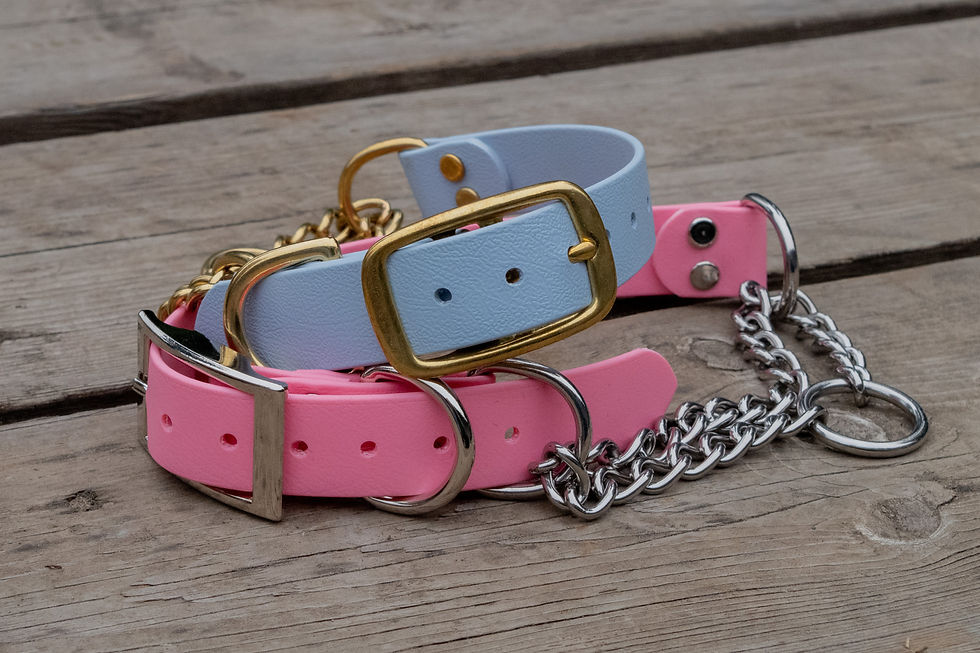
1" Biothane Martingale Collar
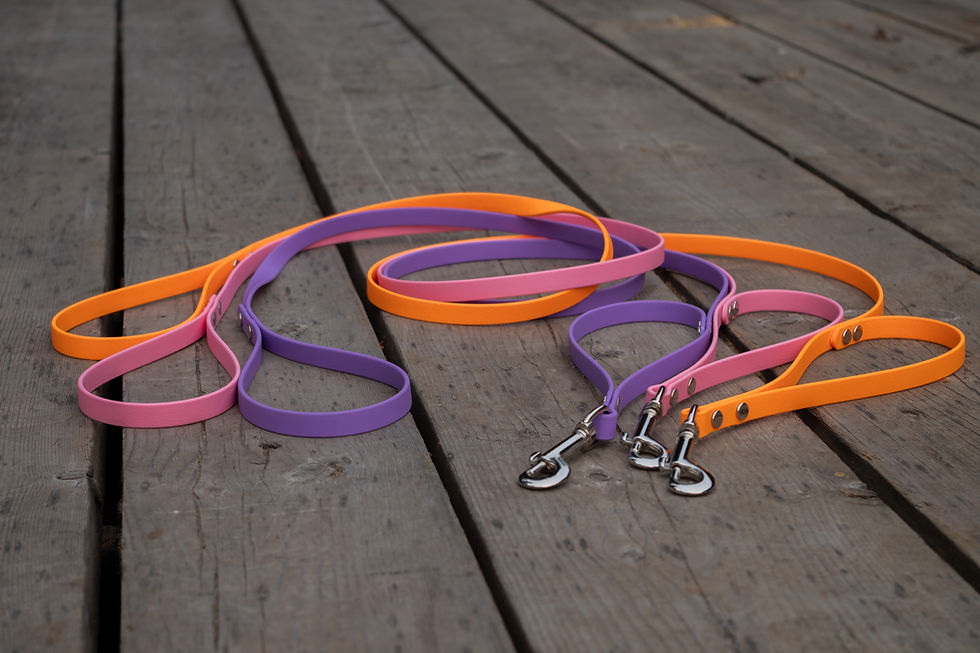
1/2" Biothane Double-Handle Leash
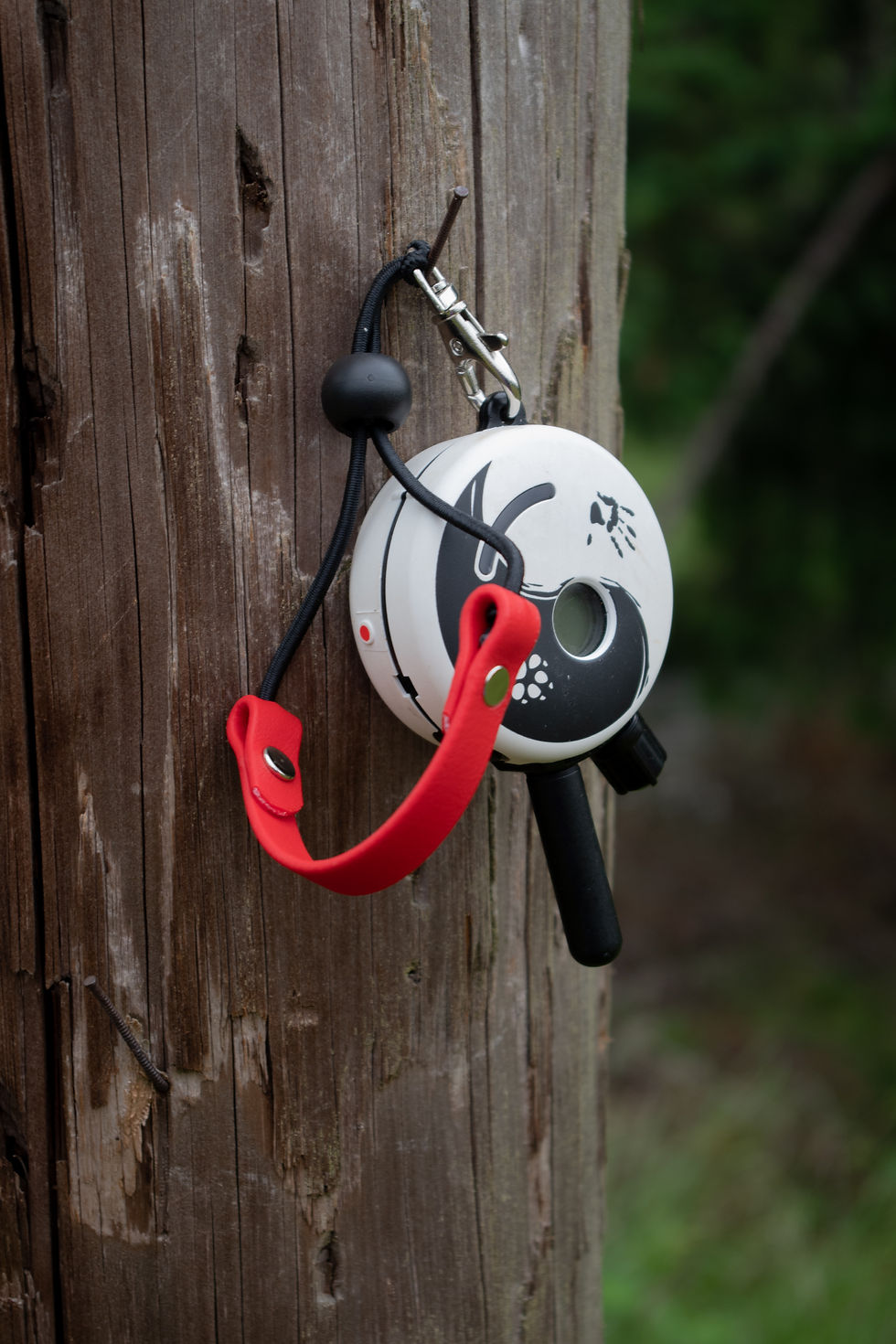
Biothane Wrist Strap

Biothane Long Line Keeper
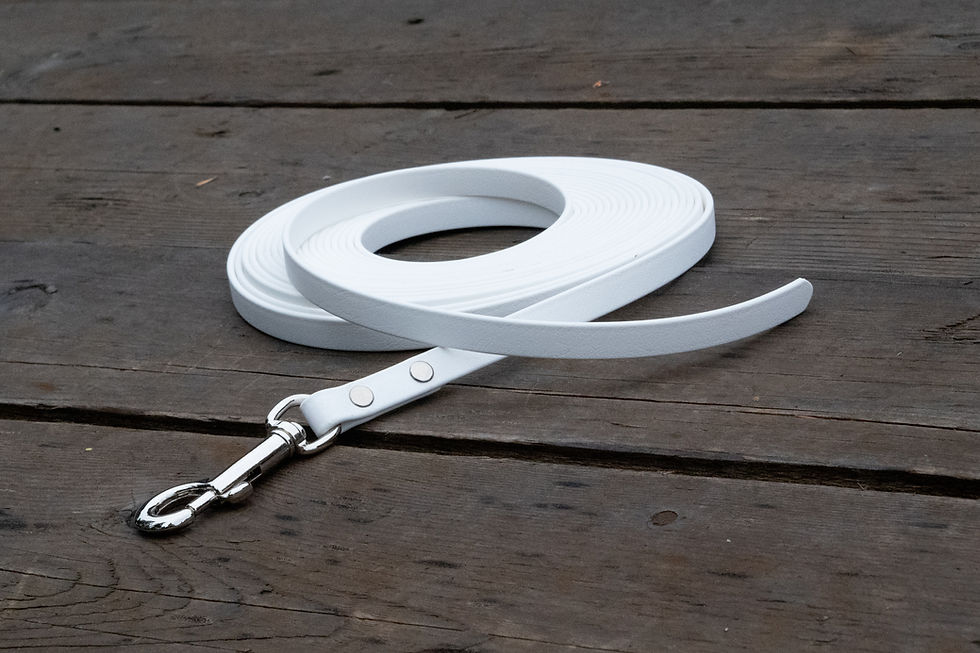
1/2" Biothane Drag Line | No Handle

1/2" Biothane Long Line | With Handle
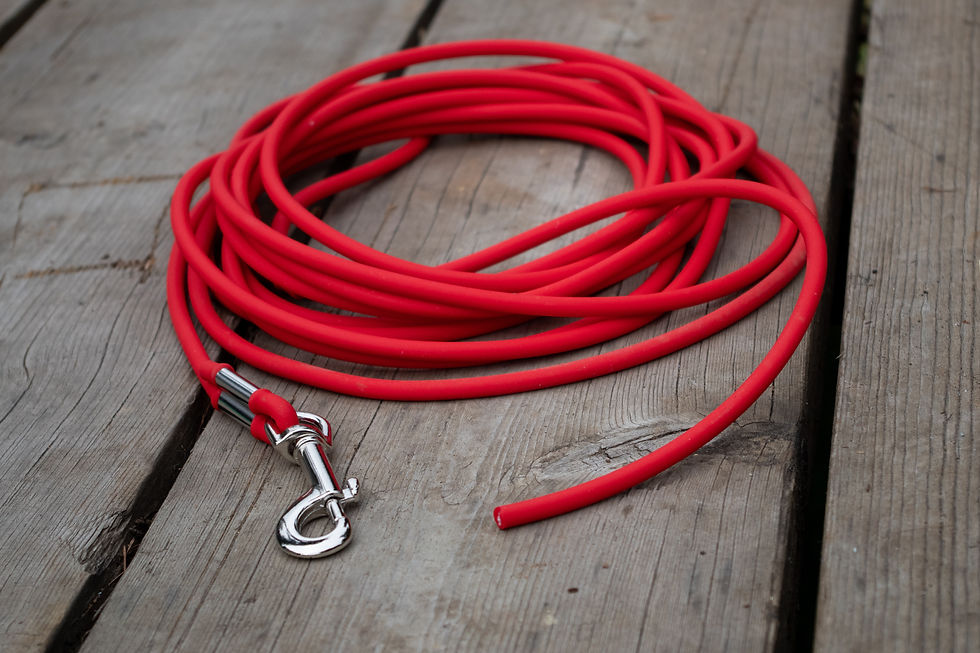
Biothane Rope Drag Line | No Handle
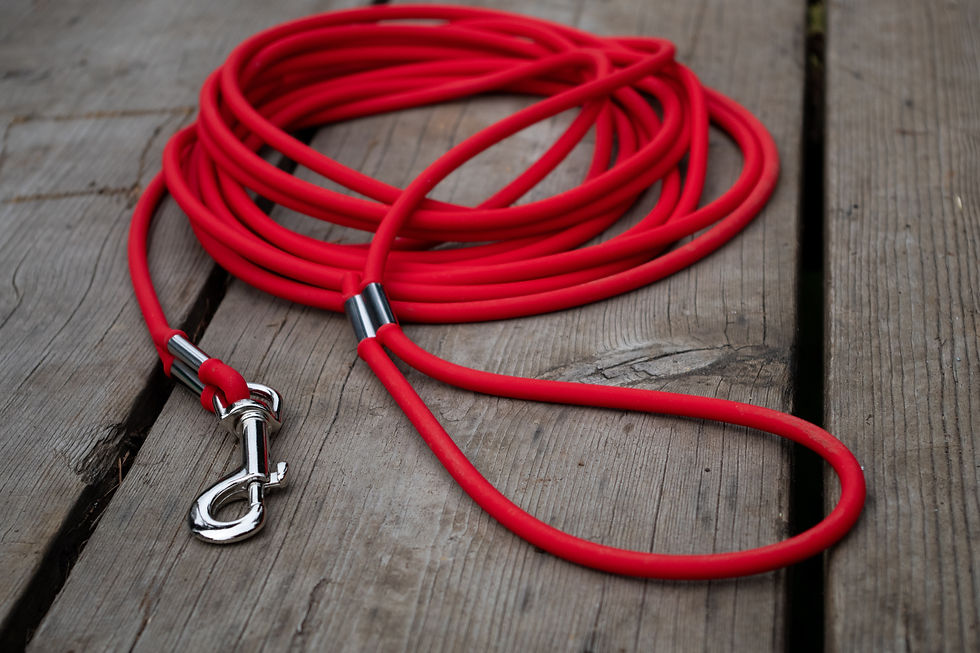
Biothane Rope Long Line | With Handle
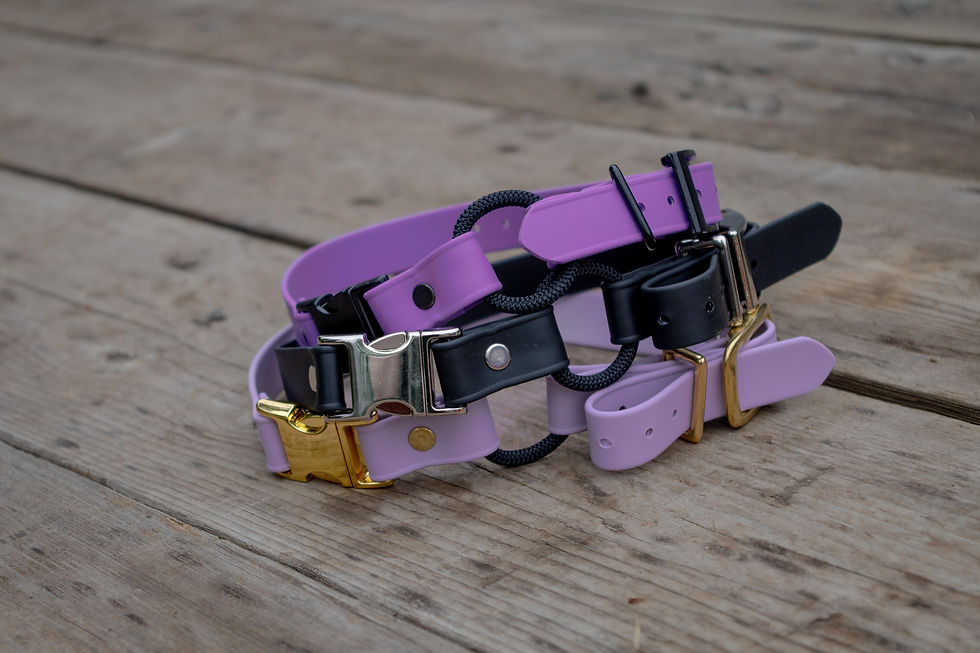
3/4" Quick Release Bungee E-Collar Strap
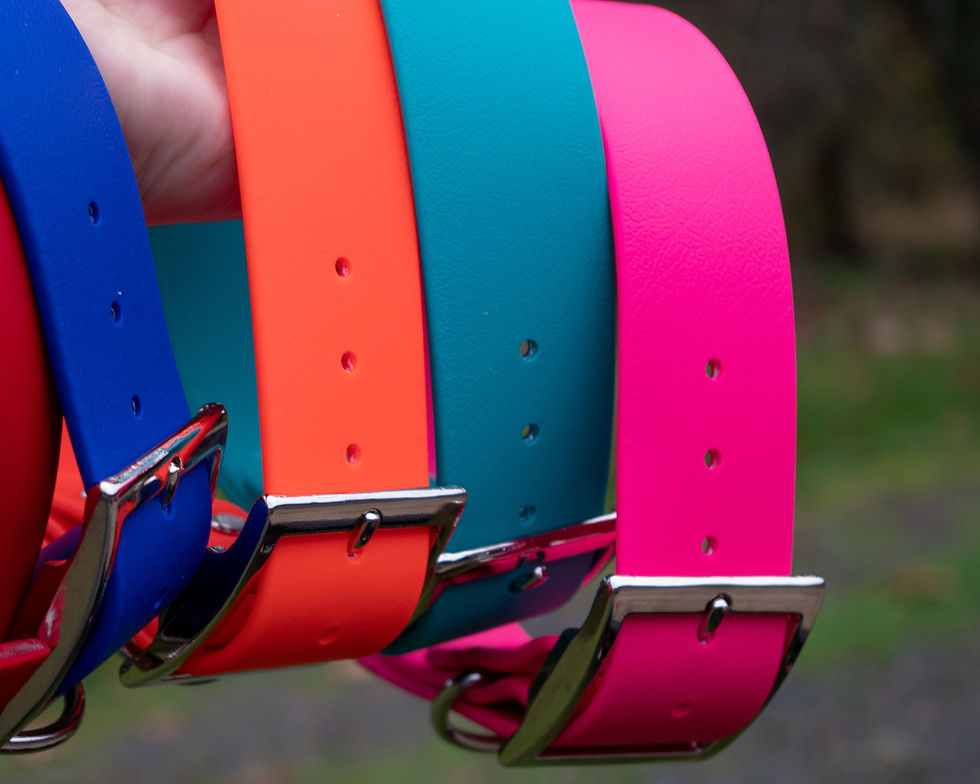
1.5" Biothane Flat Collar
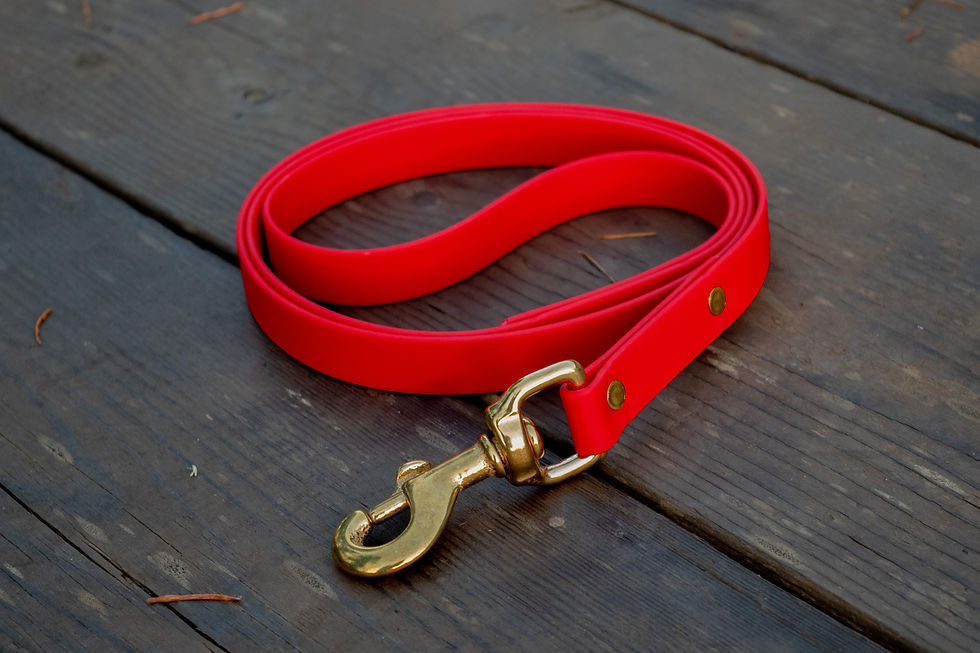
3/4" Biothane Leash
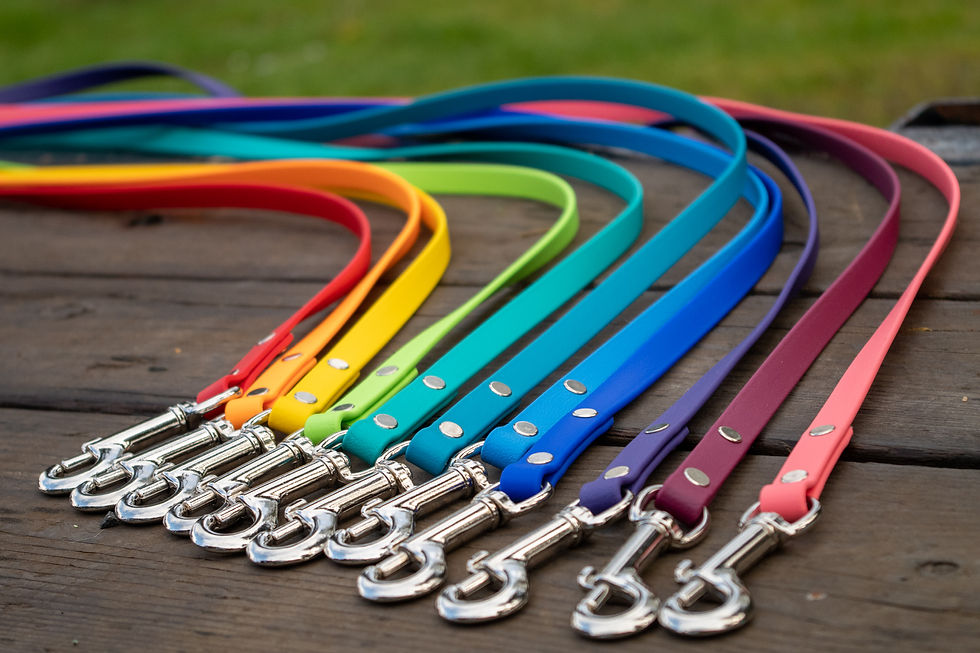
1/2" Biothane Leash
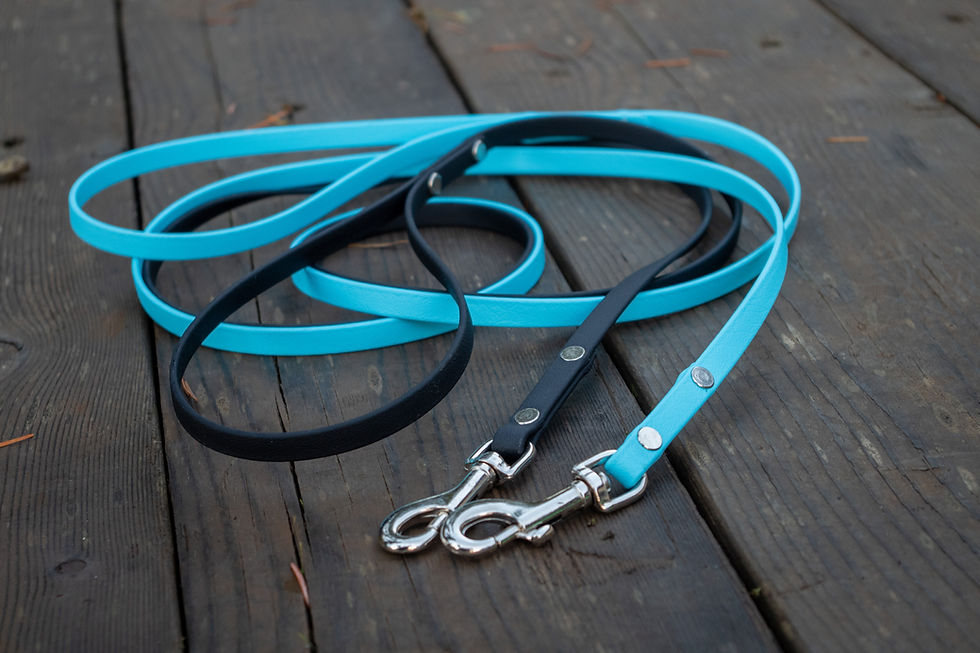
3/8" Biothane Leash
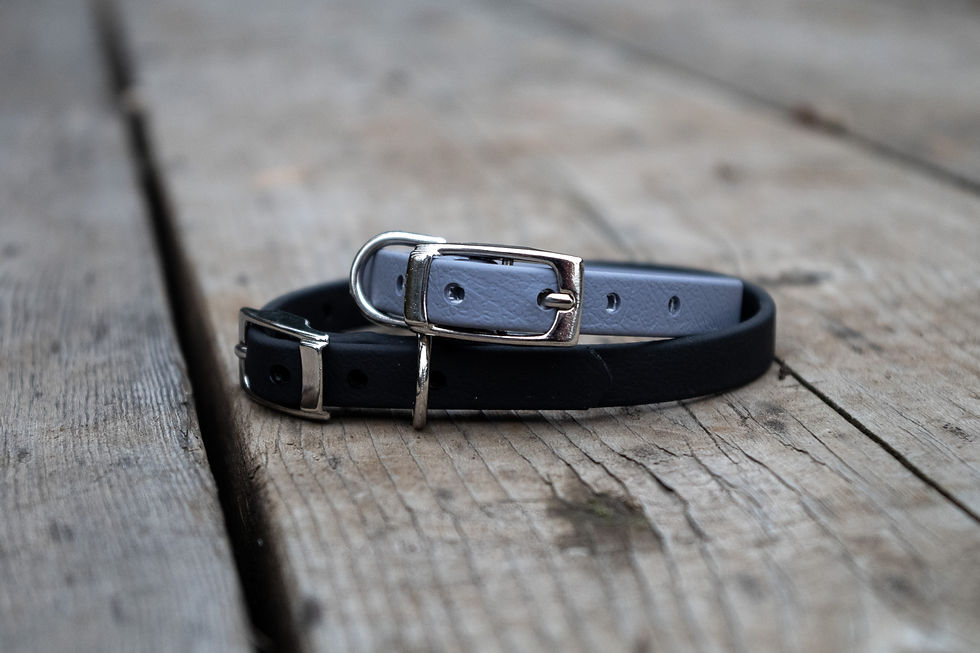
3/8" Biothane Flat Collar
Here at Wandering Dog Co, we make custom biothane dog gear for all occasions. From simple to complex, dogs small to large, training gear to everyday wear, we do it all!
While you're here, check out our shop! We're always expanding and adding new products, patterns, and color options.
Custom orders are always open, so feel free to reach out if you have a custom idea!

Thanks for submitting!
- Solvang, California /
Wandering Dog Wine Bar
Wildling Art Museum is a great attraction for tourists who come to eat at this bar after long walks. Taste nicely cooked salami that is offered at Wandering Dog Wine Bar . Here you can have delicious prosecco , beer or champagne .
The warm atmosphere of this place makes visitors feel relaxed and have a nice time. The creative staff shows a high level of quality at this spot. Prompt service is something that people note in their comments. Based on the guests' opinions, prices are good.
Best in the city This award is based on the analysis of multiple factors, including reviews, ratings, and user engagement trends on Restaurant Guru.
Frequently mentioned in reviews, ratings of wandering dog wine bar, visitors' opinions on wandering dog wine bar.

Similar restaurants nearby
Tasty dishes in solvang.

Restaurant features in Solvang

Reasons Why Dogs Run Away and How to Stop It
Kayla Fratt, CDBC, is a certified dog behavior expert and writer with a decade of hands-on experience in dog training and canine aggression. She is a member of the International Association of Animal Behavior Consultants. Kayla also works with cats and birds, including falcons and homing pigeons.
:max_bytes(150000):strip_icc():format(webp)/2018-08-0513.05.08-5c3a4ba846e0fb000170685d.jpg)
- Seeking a Mate
- Stopping the Behavior
Losing your dog can be a terrifying experience. It’s even scarier to realize that your dog ran away on purpose. If your dog runs away repeatedly, it’s important to understand why and figure out how to stop it.
As with any behavior problem, our main goal is to figure out WTF: What’s The Function of this behavior? If we can answer this question, we can figure out how to meet your dog’s needs without letting him fly the coop! Of course, we can’t quite ask your dog why he’s running away, but we can make some educated guesses based on his behavior and the behavioral patterns of his species.
Your Dog is Bored
This is the number one reason that most dogs escape. They’re left alone in the yard with nothing better to do, and it’s not that hard to get out. So they take themselves out on a little walk around the neighborhood.
If you’re not providing your dog with something to do, there’s a good chance he’ll come up with his own ideas. In many cases, this means he’ll take himself on an adventure!
Solve this by supervising your dog, giving him proper exercise , and mental enrichment to keep him busy.
Your Dog Is Looking for a Mate
Unaltered or intact males are particularly guilty of wandering the neighborhood looking for love. That said, neutering your dog or getting a female won’t necessarily prevent your dog from ever deciding to wander.
If your boy dog can smell a female nearby, especially if she’s in heat, he will put in a lot of effort to jump the fence and go meet her. Females, especially females in heat, may also escape to find a suitor. Neutering your male dog and spaying your female dog can help reduce this problem.
Your Dog Is on the Hunt
Many dogs readily jump fences or escape the yard to chase down a bunny, squirrel, or another potential prey item. While this is a bit more common in prey-driven breeds like Huskies, almost all dogs naturally enjoy chasing small fluffy animals.
Leaving your dog unattended to chase squirrels or bunnies will almost always result in a dog who enjoys this hobby more and more. Even if your dog doesn’t usually hop the fence to chase down a squirrel, sometimes the chase is just too fun to stop.
Supervising your dog, giving him something better to do, and improving your fencing can all help prevent your dog from escaping to chase other animals.
Your Dog Is Scared
Even the most well-behaved dogs may try to escape if they’re scared enough. This problem is especially common during summer thunderstorms or fireworks. These loud booms can send even mild-mannered dogs into a panicked frenzy. In a desperate attempt to escape the terrifying sounds, dogs may leap through windows, bust through screen doors, or even scale high fences.
Securing your dog during thunderstorms and fireworks will help keep your pup safe. Keep your dog inside and do your best to soothe her fears about loud noises with calming treats, white noise, and ThunderShirts.
How to Stop Your Dog From Running Away
The main strategy for keeping your dog from running away is relatively straightforward: make it harder to escape. Don’t leave your dog outdoors unattended. If you don’t have a fence, build one. If you do have a fence, make it higher or add coyote rollers . These slippery rollers help keep your dog from hopping your fence and are very useful!
Avoid using underground or invisible fences, as these still leave your dog vulnerable to dog-nappers and don’t stop motivated dogs from escaping. Both underground fences and electronic collars have the potential to burn your dog and are even linked with increased aggression around property lines .
However, it’s also important to treat the underlying issue. Sure, a secure fence and supervision will help. But if your dog is truly bored, scared, or motivated to escape, he might still find a way out. Even if you can prevent your dog from escaping with good fencing, your dog might still be bored or scared!
Once the fence is secure and you have an idea of why your dog is trying to run away, it’s important to treat the root of the problem:
- Neuter or spay your dogs to prevent sexually motivated roaming. This will help reduce the hormonal drive to roam, but it won’t necessarily change the habit if your dog has been roaming for years!
- Give bored dogs something else to do, like chew toys or play a game with them. Most dogs do best with at least a few chew toys and puzzle toys every single day, especially when they’re left alone.
- Increase exercise so that your dog doesn’t feel the need to walk itself. Some dogs need over an hour of walking or running per day to be happy! For prey-driven dogs, try using a flirt pole to let them get their instincts out in a safe environment.
- Consider taking your dog to doggy daycare to keep it busy and mentally stimulated under supervision during the day.
- Help your fearful dog feel more comfortable with loud noises. Tools like calming treats, Thundershirts, and white noise machines can help, but most dogs truly need help using systematic desensitization and counterconditioning. Apps like Train Away can help with that!
If your dog is continuing to roam, it might be time to get help from a trainer. A trainer will help you come up with a training plan that keeps your dog safe and avoids another visit to the pound to pick up your escapee! Trainers are especially helpful if your dog’s escape is motivated by prey drive or fear.
More from The Spruce Pets
- The 7 Best Fences for Dogs of 2024
- Why Your Dog Is Bored and How to Stop It
- Why Dogs Eat Grass and How to Stop It
- Irish Terrier: Dog Breed Characteristics & Care
- The 9 Best Dog Tug Toys Tested With Real Dogs
- The 9 Best Dog Pens of 2024, Tested and Reviewed
- How to Stop Your Dog from Growling
- Rat Terrier: Dog Breed Characteristics & Care
- How to Stop Your Cat From Escaping
- Dog Training 101: How to Completely Train Your Dog
- Why Does My Dog Get Zoomies?
- How to Stop Dog Bites
- Reasons Why Dogs Get Aggressive and How to Stop It
- Weimaraner: Dog Breed Characteristics & Care
- The 10 Best Calming Aids for Dogs To Help Soothe Any Anxiety
- Beagle: Dog Breed Characteristics & Care
- Growing Houseplants
- Indoor Garden Ideas
- Cactus & Succulents
- Houseplants Care
- Flowers & Blooms
- Gardening Guide
- Plant Care and Tips
- Beans/Fruit Vegetables
- Companion Planting
- Culinary Herbs
- Flowering Herbs
- Garden Design
- Gardening Ideas
- Growing food
- Growing Trees and Shrubs
- Leafy Vegetables
- Medicinal Herbs
- Patio Gardening
- Root Vegetables
- Shade Plants
- Temperate Fruits
- Tropical Fruits
- Balcony Gardening
- Container Fruits
- Container Gardening Ideas
- Container Herbs
- Container Vegetables
- Rooftop/Terrace Gardening
- Urban Gardening
- Vertical Gardening
- More Than Gardening
- Best and Top of Gardening

- Container Gardening
- Indoor Gardening
Is Wandering Jew Toxic to Cats & Dogs?

2-Minute Read
Wondering is wandering jew toxic to cats and dogs discover the answer about this wonderful houseplant in our informative post.
If you have both a cat or dog and a wandering jew plant, then this question must have crossed your mind– Is Wandering Jew Toxic to Cats and Dogs ? Being a plant and pet lover you must be concerned for both, and you’re right. Well, this article will enlighten you!
Also Read : Can Cats Eat Rosemary?
What is a Wandering Jew Plant?

The Wandering jew ( Tradescantia ) is a warm climate tropical plant. This name is used for many different species in the Tradescantia genus that includes approx 75 herbaceous perennial species. Some of them are considered as invasive weeds, and some are popular as outdoor garden plants. Many are popular indoor plants for containers. You can learn about the most popular varieties here .
It’s an easy to grow plant, which can tolerate both sun and shade. However, the best growth is observed in partial shade and slightly moist soil. Well-drained potting soil and warm surrounding is favorable for indoor wandering jews. You can grow in window boxes, hanging baskets and creative pots. They look best cascading down from a height.
Also Read : 19 Low Light Indoor Plants Safe for Cats and Dogs
Is Wandering Jew Toxic to Cats?

According to the ASPCA ( American Society for the Prevention of Cruelty to Animals ), the wandering jew can be toxic to cats, dogs, and horses as it contains calcium oxalate crystals in leaves and stems. It may not seriously injure your pet but still chewing it can cause discomfort. This mildly toxic plant can cause skin or bowel irritation in cats. If your cat or dog has ingested any part of the plant; particularly the stem , then it can cause diarrhea or vomiting.
Also Read : Is Frankincense Safe for Cats?
Treatment of Wandering Jew Poisoning in Cats

If your cat shows symptoms like skin allergy or irritation in the abdomen, paws, anal area, and scrotum. Then try any of these following solutions.
- Give a bathe to your feline if there is any skin allergy or irritation.
- If you observe any digestive system related problem in your pet, then consult your regular vet for this.
- Let your cat drink enough water and avoid any movement.
- You can also apply aloe vera gel to the allergic area.
Also Read : Can Cats Eat Watermelon?
Protecting Your Pets from Wandering Jew Plants
You can protect your cats and dogs from wandering jew plant or vice versa by locating it in an area which is out of their reach. Growing it in hanging baskets is one of the resorts. If the long trailing vine falling below, keep them short by pruning wandering jew from time to time.
Know the Names of 11 Cat Safe Succulents here
Watch this video for more information.
Recent Posts
18 plants to grow under tomatoes | what to plant with tomatoes, 16 annuals that grow vertically, 29 best pink fruits for garden and pots, 17 trees that look like a fern, 19 orchid arrangement ideas, 20 best plants for hanging from the ceiling, 9 succulents that make you lucky | good luck succulents, 5-6 foot evergreen shrubs for privacy, join our 3 million followers:, related articles, is chocolate a fruit or vegetable, difference between tomato sauce and tomato paste, 26 spiritual tattoos related to plants, christmas cactus meaning and why should you grow it, 32 beautiful birds with long necks, wasp vs yellow jacket: all the differences and similarities.
Good and useful article for pet owners, but the term Wandering Jew is considered offensive in these more enlightened times.
People need to get over this stupidness and everything being offensive. Covid has given them too much time on their hands….Next they will want to change Betty White’s name or Clint Black.
Yes, thank you. You’re absolutely spot on with that. Nowadays people are offended by everything…and I mean EVERY LITTLE THING. How many names have to be changed to appease everyone? It’s ridiculous and not worth the hassle.
Just say you’re anti-semitic
Sometimes names give honor ,why does everyone think everything is always meant to offend. Sometimes it neither, its just what it is called.
Not Truly Offensive…
I’m a Jew and I have moved from City to city in my life only five times
yet I consider MySelf a Wandering Jew!!!!!
My plant is sitting in water at the moment and my cat decided to drink the water, will this harm him?
I see your question was written in 2021. I’m sure you have answered your question.
You would most likely notice symptoms in your cat if you are observant regarding it’s behavior. My cat has been feeling sick for a week and I’ve just discovered the Wandering Jew is the reason. I got some clippings a week ago and on the drive home he must have eaten some as he was free in the car. He is improving daily, but I will take him to the vet tomorrow for further evaluation.
LEAVE A REPLY Cancel reply
Save my name, email, and website in this browser for the next time I comment.

Get the Best of BalconyGardenWeb Directly in your inbox.
POPULAR CATEGORY
- Best and Top of Gardening 1581
- Flowers & Blooms 629
- Growing Houseplants 599
- Gardening Guide 413
- Gardening Ideas 381
© 2023 Balcony Garden Web | All rights reserved
- Privacy Policy
- Terms of Service
- Feedback Page

- Pet Parents
- Your Privacy Matters
- Ask a Question

A Relaxing Vacation With A Glass Of Wine And Your Dog
A weekend break can be a relaxing time for you if you add a little R & R to the mix. Relaxing with a glass of wine and your dog is one way to make your weekend trips more exciting and entertaining for you and your dog. Watching movies with your dog is another way to make your weekend trips more entertaining and relaxing. To have an R weekend, start by making your dog a good company on your road trip.
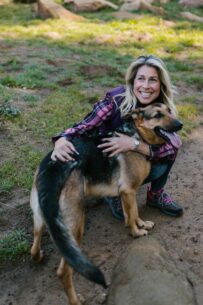
First, keep in mind that dogs are pack animals. When you take them on a weekend trip, they become your family. They need to know that you will always be there for them, and they need to know that you will be there to love them through thick and through thin. This also means that during your dog’s weekend stay with you, they need time for their own personal relaxation too.
Take your dog on a vacation. While this may sound like a lot of work, it really only takes a few minutes of effort. You can easily arrange it. Once this is arranged, have a small bag with some dog snacks or treats.
Spend some time with them. This may include walking, swimming, or playing with them inside the house. However, once you’ve had a chance to spend some time with your dogs, make sure to take them to an outdoor area where they can enjoy the fresh air and the sunshine. In addition to spending quality time with your dogs outside, you’ll also be doing them a big favor by giving them the extra exercise that they crave and will greatly benefit their health.
When it’s time to relax and unwind, head over to the deck or patio to sit down and enjoy some fresh air with a nice glass of wine. Once your dog has finished playing in the sand or pool, let him have a few small bites of your homemade catfish dish. You can even make a recipe for a treat that includes breadcrumbs, cheese, onions, garlic and peppermints as well as a bit of oil for a delicious treat that your dog will love. When the meal is finished, offer your dog a bowl of his or her favorite water to drink while you enjoy a nice, relaxing evening with your friends or family.

When you think it’s time to head out for the evening, head to a local restaurant that specializes in making pet beverages. Most of these establishments offer regular tasting sessions where you can try several different kinds of wine and other beverages for your special pet. During these sessions, you’ll get to sample all sorts of food items as well, such as appetizers, main dishes, side dishes and desserts. By taking your special pup out to a fun tasting event, you’ll give him a fun experience as well as an opportunity to socialize with other dogs.
It’s not often that we take the time to stop and have a conversation with our pets. However, if you and your pet are like most people, you enjoy spending time with them and share stories of your own. Spending a little time with your dog will show him or her that you are not only friendly, but that you also consider him or her a member of the family. If you spend more than a day at home, take him out to see the sights. Take him along to the local park so he can enjoy the sunshine and listen to the noises of the animals around him. The more time you spend together as a family, the closer your bond will become.

Great Wine-Themed Gifts For Dog Lovers
Choosing a gift for a wine and dog-loving relative or friend may seem like a daunting task, but the endless array of gift ideas ensure you have tons of fun choosing the right item for your loved one. Nothing in the world makes a person happier than dogs and wine. Giving a related gift this holiday season will make the year a little brighter. Plus, with so many gift ideas, you can find a gift for anyone on your gift-giving list.

Dog Bottle Opener
Every wine lover needs a durable bottle opener. Why not combine it with a cute dog and give the recipient the best of both worlds? Buddy the Border Collie corkscrew wine bottle opener is cute and cuddly, just like our favorite pets. The 4.5″ wine bottle opener has a double-hinged design for extra comfort. It is easy-to-use and one addition to the kitchen that your friend will love.
Subscribe for Gifts That Keep on Giving
A BarkBox subscription makes the season a little bit merrier for your dog-loving friend. Subscribe for six or 12-months and each month, a box of goodies for pets is delivered to the recipient’s front door. Why should the fun be limited only to the holiday season? Barkbox is priced and has all the things dogs want!
A Ruff Display
Have a friend who displays their wine corks? It is a fascinating hobby for many people. Accommodate their needs with the True Fabrication Wine Cork Display this holiday season. Designed in the shape of man’s best friend, the adorable display stores up to 50 wine corks. It is constructed from solid metal material and then decorated in bronze for an elegant look in any space.
A Helpful Holder
The Playful Pup bottle holder is so cute it is irresistible! The playful pup holds one 750ml bottle without complaints about a few minutes or a few hours. It is bendable so you the pup can lie down, lie on his back, lie on his tummy, and more. It is made of durable resin materials so lasts for many years to come. Give this gift and make the wine lover in your life a happy person.
Totes and Tees
I Just Want to Drink Wine and Pet My Dogs tote bags are perfect accessories for the busy person who is always on the go. The attractively designed bags feature beautiful dog artwork and this message is written boldly across the bag. The bag is made from 95% post-consumer material. You will feel good about giving this bag.
I Just Want to Pet My Dog and Drink Wine, a fantastic t-shirt for guys and gals, comes in assorted sizes and colors and sends the exact message that every pet lover wants their friends and others to know. This affordable t-shirt is a great gift for any dog lover on your list. They’ll wear this shirt often.
Heartfelt Gifts
One great gift idea is the Pinot for Paws Gift Basket . This set includes a bottle of Pinot of your choice, a cute canvas bone, a giraffe toy, a doggy bag holder, and a tennis ball. With gifts for your special friend and their pooch, this gift warms the hearts of dog and wine lovers all season long. Plus, proceeds benefit animal adoptions! It is a pre-made gift that is easy to give to any dog-loving wine enthusiast on your shopping list.
Give a dog and owner care package this holiday season and everyone enjoys opening a gift this year. This beautifully decorated care package includes gourmet cookies for the dog and delicious gourmet chocolate chip cookies for the owner. Along similar lines, why not give your canine-crazy friend an automatic dog feeder so that they can get ahead of their responsibilities and free up more time to… Well, you know.

Want to give more than a few gourmet treats? Check out the Merry Gift Baskets gift basket . Filled to the brim with awesome gifts for pet and pet parents, this basket will light up the recipient’s’ world! Inside this cute gift basket is a Dingo Wags N’ Wraps treats, gourmet treats, a rope toy, and a squeak toy.
Warm Feet Make Happy Pets (& Owners)
The Made You Smile gift socks are great for men and women who love wines and dogs. The socks each feature different sentiments that prove the love for their pet. Best of all, this is a quality gift at an affordable price.
A Sip of Wine With a Clear Message
Dogs and Wine Make Life Better says this wine glass. It is elegantly etched and perfect for the wine enthusiast in your life. Every sip tastes a little better when it is taken from this amazing glass .
Yes, wine and dogs rule the world in the eyes of many people. Choosing a gift for this type of person is always pretty simple, especially when you choose a gift from the list above. These gifts suit the needs of a dog and wine lovers everywhere. Best of all, there are gift ideas on this list that suit the needs of everyone, regardless of their budget. Choosing the best gift from so many awesome choices is not easy, but it sure is a lot of fun. Now, browse these gifts and find the perfect choice for that special person in your life.

Excellent Canine-Themed Cocktails For Dog Lovers
Believe it or not, there are some cocktails that are named after dogs and that is just adorable. Whoever thought of that deserves a pat on the head. The Salty Chihuahua is one of the most popular drinks around and it does not take many ingredients to make it either. It only takes grapefruit juice, tequila, and salt to make it such a lovely mix. It is one of those drinks that are pretty popular when you go to house parties since it is not that hard to make as you will have all the ingredients that you need at your disposal.
Better remember that these excellent canine-themed cocktails for dog lovers are only for humans and not for dogs to consume. We all know how much their tummies would ache if they end up consuming these cocktails.
Another doggy cocktail worth your time would be the Pomeranian as it would work great if you also have a dog like that. It would work well if you have a dog like that. The ingredients are vodka and grapefruit juice plus a tablespoon of honey so it would get a little sweet. At the same time, it is going to get you a little bit drunk when you least expect it to do so. After all, the night won’t get a bit fun when that happens.

Another drink that would certainly catch the attention of dog lovers would be the Greyhound. It may be the doggy cocktail that started this craze. Be sure to bring out at the Greyhound bus when you are on your way to a far destination. Better not drink too much of it though or there may be a chance that you will miss your destination when you fall asleep on the bus. It has to be the easiest drink to make on this list as you will just need grapefruit juice combined with vodka or gin. Better choose a nice type of vodka for that satisfying taste that will stay on you for quite a few hours. Remember how strong vodka is compared to gin but both can affect you just as hard as it can.
The Great Dane is another doggy themed cocktail that is bound to get a lot of attention due to how great it looks. It contains gin, dry vermouth, and cherry brandy. Plus, there is an additional teaspoon of kirsch to get that proper kick into your body. It won’t be long before you would want another glass to go along with it. After all, it would not be fun if you would just get one glass due to how great it tastes. There is nothing wrong with giving in to the temptation when you know that it would make you happy in more ways than one.
Of course, it would be nice to pair the cocktails with finger food so it would become a pretty long night. When that happens, you will want to drink more and you won’t even remember what happened.

What Happens If Your Dog Drinks Wine?

With the pass of the years, people have been discovering multiple things that are damaging others individuals or animals such as domestic pets like dogs, one of the few examples that can be dangerous for your dog’s health is the case of wine or alcohol in general, there are some few “basic” methods that claims to cure our dogs of issues in their stomach, the procedure consists of making the dog sip some alcohol or wine to make them feel better.
This has multiple points of views, a few individuals seen this as a good alternative for making our dogs feel better and the great majority has been wondering if giving wine to your dog should be considered abuse, so, to make things clear, it’s time to discover what happens is your do drinks wine for whatever reason in the world, stay tuned to learn more.
WHAT HAPPENS IF YOUR DOG DRINKS WINE:
First of all, if you are someone that has given your dog a sip of wine or alcohol in the past as a way of treating some stomach issue, then you can rest your head knowing that it won’t cause any problem to your dog health status, however, this is mainly because for the extremely low quantity that it was given to your pet, let’s be honest, a small sip of alcohol is not even dangerous to most children or even teenagers, so why would dogs get affected in a dangerous way by this addictive product, right? Well… wine is not something that is on the list of favorites foods or drinks of dogs, so you need to read the rest of the article to avoid making a bad move that could put someone in danger.
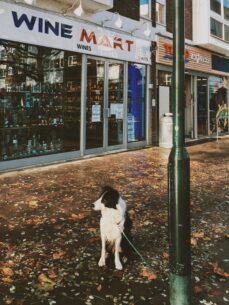
Like almost everything in this harsh world, consuming things in massive quantities will just give problems to your body, and in the case of dogs and wine, the reality is not very different from that statement and is a fact that dogs are not very tolerant to products that count with an insanely large amount of calories on their compositions and since wine of bad or regular quality tends to come with that characteristic, giving it to your dogs like it’s water will not be a good idea at all, remember that it could even cause massive issues in their livers which will gradually reduce the dog’s lifespan, and no one wants to receive that news ever.
SO, SHOULD I GIVE MY DOG SOME WINE IF IT FEELS BAD?
In conclusion, we discovered that a little bit of wine can’t be harmful to domestic animals like dogs, however, it shouldn’t be your main alternative of treatment for any issue, since you don’t know how your dog can react to that experience, and if it’s a small brand then the results could be worse than ever, so, take things easy, don’t rush the procedures and look carefully for good medicine or treatments that could help your dog in a less aggressive way, leave the win and alcohol to the human beings that want to celebrate holidays with you, let’s do our best to be great owners and maintain a happy relationship with dogs.

Does Your Dog Know When You’re Drunk?
It’s 11 o’clock at night and you’ve had just a few too many while out with some friends. You manage to get an Uber and head home only to find Terry (that’s your dog) looking at you with a confused look on his face.
Huh. That’s weird. Normally Terry can’t wait to greet you at the door. Even around this time, he’s normally trying to barrel you over and get a few licks in.
You try to give him a smooch but he only backs away, yipping loudly at you as if you’re a stranger.

Wait a minute… he doesn’t actually “know” you’re drunk… does he?
WELL… KIND OF
Yes, ladies and gentlemen, when asking the question as to whether or not your dog knows when you’ve been knocking them back or getting a bit too crazy, the sad answer is “pretty much”.
“How is that possible?” you might be asking right about now and it’s certainly a fair question to ask. After all, it’s not like they know what “alcohol” or “drinking” means.
So how DO they know when you’re drunk?
THEY CAN SMELL IT ON YOU
We all know this. Dogs have an incredible sense of smelling that’s pretty much second to none. And while you may be able to fool your friends and family into thinking you’ve only had “a couple”, your best friend Terry is just way too perceptive for that. According to one finding, it was shown that dogs have over 300 million olfactory senses compared to the measly 60 million located in us.
That’s over 5 TIMES our sense of smell! Not only that, but the portion of a dog’s brain spent analyzing those smells is another 40 times ours.
It’s because of this incredibly sensitive amount of smell that dogs are so often used by the military and police for finding trace scents of different illegal materials such as weapons, narcotics, or even explosives.
So… yeah. They know when you’ve had a few too many.
THEY CAN GAUGE YOUR BODY LANGUAGE
When you walk, when you talk, how you stand, the crook of your neck, all of these things speak to your innate body language and overall body position. It’s why you walk differently than your siblings and why your friend “talks with their hands”. All of these things are subtle, subconscious bodily movements you make without even being aware of it.

You have to realize that every physical movement you make, be it how you breathe or what you say and how you say it, is all just electrical signals from your brain to various parts of your body. When you drink, those signals become delayed and disjointed. Not only that but both your medulla as well as your cerebellum (two aspects of the brain that control physical movement) are both directly impacted and impaired by drinking, making you more likely to stumble around or feel sleepy.
And just like with their sense of smell, dogs can know immediately when something is off with our altered body posture or position. In fact, from their point of view, you can appear as if you’ve been injured.
So, while dogs may not know THAT you are specifically drunk, based on your smell and gait, they can definitely tell WHEN you’ve been knocking them back.
So if you don’t want your little bud stressing out that something is wrong, maybe cut in a bit earlier next time you’re out.

A simple inn on a quiet island
Wander back in time. be charmed by the simplicity of yesteryear when too much screen time was not a concern and the best “connections” were made on a porch., the wandering dog inn is canada’s most southern inn located on canada’s most southern inhabited land – pelee island. bike the island, hit the winery….


California dogs found wandering the streets have 'strong bond,' looking for loving home
Two bonded dogs are available for adoption after being found wandering the streets of California.
Etsy and Dwight were found on a busy street in Hayward, California, walking side by side.
A good Samaritan saw the pair and picked them up, keeping them safe while searching for their owners, according to Muttville Senior Dog Rescue in California.
When no owners were located, the good Samaritan turned to Muttville for help finding the two pooches a new home.
CALIFORNIA DOG NAMED PLATINUM, A SILVER CHIHUAHUA, HAS HAD A TOUGH ROAD, NEEDS A FOREVER HOME
The 12-year-old best buddies are now in the care of Muttville in San Francisco.
READ ON THE FOX NEWS APP
Etsy is a 19-pound female Chihuahua mix who loves to snuggle and take naps, especially with Dwight by her side, according to Muttville.
BONDED DOG PAIR IN NEW YORK READY TO BE ADOPTED BY LOVING HOME: ‘DYNAMIC DUO'
She spends most of her days lounging around the house because she isn’t as mobile as Dwight.
Dwight is a 20-pound male Spaniel mix known for being sweet and friendly with other dogs, cats and kids, the rescue organization notes.
DOG IN CALIFORNIA SEEKS FOREVER HOME: ‘ALL-AMERICAN' PUP IS ‘ALWAYS SMILING’
Dwight is also doggy door trained for potty breaks when his owner isn’t home.
He loves to be outdoors and is curious and very active, according to the rescue.
Although the two are very different, they share a close bond that is obvious upon spending time with them, the rescue also says.
CLICK HERE TO SIGN UP FOR OUR LIFESTYLE NEWSLETTER
Due to their special bond, Muttville would like the two to be adopted together.
Muttville Senior Dog Rescue is a nonprofit organization that works to help dogs over the age of 7 find a loving home.
The organization works with various shelters, individuals and other animal organizations to care for senior pups who have been surrendered.
For more information on adopting Dwight and Etsy from Muttville Senior Dog Rescue, visit Muttville.org.
Want to read about other pets up for adoption? Check out this recent article from Fox News Digital: New York dog nicknamed Shadow is up for adoption: Pooch ‘wants to be by your side’
And click here for other Fox News Digital Adoptable Pets stories .
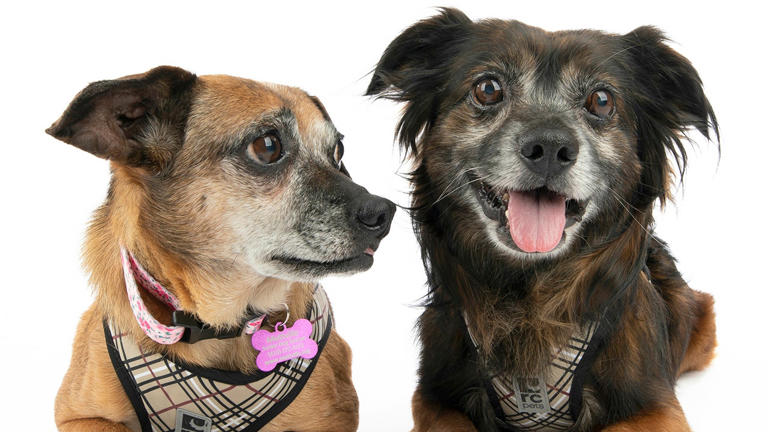
Advertisement
Supported by
For Caleb Carr, Salvation Arrived on Little Cat’s Feet
As he struggled with writing and illness, the “Alienist” author found comfort in the feline companions he recalls in a new memoir, “My Beloved Monster.”
- Share full article

By Alexandra Jacobs
- Barnes and Noble
- Books-A-Million
When you purchase an independently reviewed book through our site, we earn an affiliate commission.
MY BELOVED MONSTER: Masha, the Half-Wild Rescue Cat Who Rescued Me, by Caleb Carr
J. Alfred Prufrock measured his life out in coffee spoons . Caleb Carr has done so in cats.
Carr is best known for his 1994 best-selling novel “ The Alienist ,” about the search for a serial killer of boy prostitutes, and his work as a military historian. You have to prod the old brain folds a little more to remember that he is the middle son of Lucien Carr , the Beat Generation figure convicted of manslaughter as a 19-year-old Columbia student after stabbing his infatuated former Boy Scout leader and rolling the body into the Hudson.
This crime is only fleetingly alluded to in “My Beloved Monster,” which tracks Carr’s intimate relationship with a blond Siberian feline he names Masha — but his father haunts the book, as fathers will, more sinisterly than most.
After a short prison term, Lucien went on to become a respectable longtime editor for United Press International. He was a drunk — no surprise there, with famous dissolute-author pals like Jack Kerouac and Allen Ginsberg hanging around the house. But that he regularly beat Caleb and threw him down flights of stairs, causing not just psychological but physical injuries that persist into adult life, adds further dark shadings to this particular chapter of literary history.
In a boyhood marred by abuse, neglect and the upheaval of his parents’ divorce, cats were there to comfort and commune with Caleb. Indeed, he long believed he was one in a previous life, “ imperfectly or incompletely reincarnated ” as human, he writes.
Before you summon Shirley MacLaine to convene 2024’s weirdest author panel, consider the new ground “My Beloved Monster” breaks just by existing. Even leaving aside the countless novels about them, dogs have long been thought valid subjects for book-length treatment, from Virginia Woolf’s “ Flush ,” about Elizabeth Barrett Browning’s cocker spaniel, to John Grogan’s “ Marley and Me .” Meow-moirs are thinner on the ground.
It’s taken a younger generation of feminists, and probably the boredom and anxiety of quarantine, to destigmatize (and in some cases monetize ) being owned by a cat. Male cat fanciers, however, have long been stereotyped as epicene or eccentric, though their number has included such national pillars of machismo as Ernest Hemingway and Marlon Brando . When one male lawyer accidentally showed up to a civil forfeiture hearing behind a kitten filter on Zoom in 2021, America went wild with the incongruity.
Carr, though he’s a big one for research, doesn’t waste much time, as I just have, throat-clearing about cats’ perch in the culture. He’s suffered from one painful illness after another — neuropathy, pancreatitis, peritonitis, Covid or something Covid-like, cancer; and endured multiple treatments and surgeries, some “botched” — and his writing has the forthrightness and gravity of someone who wants to maximize his remaining time on Earth.
He capitalizes not only Earth, but the Sun, the Moon and the roles played by various important anonymous humans in his life, which gives his story a sometimes ponderous mythic tone: there’s the Mentor, the Lady Vet (a homage to Preston Sturges’ “The Lady Eve”; Carr is a classic movie buff), the Spinal Guru and so forth.
Names are reserved for a succession of cats, who have seemingly been as important to Carr as lovers or human friends, if not more so. (At least one ex felt shortchanged by comparison.) Masha is his spirit animal, a feminine counterpart better than any you could find in the old New York Review of Books personals . She eats, he notes admiringly, “like a barbarian queen”; she enjoys the music of Mahler, Sibelius, Rachmaninoff and Wagner (“nothing — and I’ll include catnip in this statement,” he writes, “made her as visibly overjoyed as the Prelude from ‘Das Rheingold’”); she has a really great set of whiskers.
Before Masha there was Suki, blond as well, but a bewitching emerald-eyed shorthair who chomped delicately around rodents’ organs and disappeared one night. Suki was preceded by Echo, a part-Abyssinian with an adorable-sounding penchant for sticking his head in Carr’s shirtfront pocket. Echo was preceded by Chimene, a tabby-splotched white tomcat the adolescent Caleb nurses miraculously through distemper. Chimene was preceded by Ching-ling, whose third litter of kittens suffer a deeply upsetting fate. And before Ching-ling there was Zorro, a white-socked “superlative mouser” who once stole an entire roast chicken from the top of the Carr family’s refrigerator.
To put it mildly, “My Beloved Monster” is no Fancy Feast commercial. All of the cats in it, city and country — Carr has lived in both, though the action is centered at his house on a foothill of Misery Mountain in Rensselaer County, N.Y— are semi-feral creatures themselves at constant risk of gruesome predation. Masha, rescued from a shelter, had also been likely abused, at the very least abandoned in a locked apartment, and Carr is immediately, keenly attuned to her need for wandering free.
This, of course, will put her at risk. The tension between keeping her safe and allowing her to roam, out there with bears, coyotes and fearsome-sounding creatures called fisher weasels, is the central vein of “My Beloved Monster,” and the foreboding is as thick as her triple-layered fur coat. More so when you learn Carr keeps a hunting rifle by one of his easy chairs.
But the book is also about Carr’s devotion to a line of work he likens to “professional gambling.” Despite his best sellers, Hollywood commissions and conscious decision not to have children to stop the “cycle of abuse,” Carr has faced money troubles. The I.R.S. comes to tape a placard to his door and he’s forced to sell vintage guitars to afford Masha’s medications, for she has begun in eerie parallel to develop ailments of her own.
“My Beloved Monster’ is a loving and lovely, lay-it-all-on-the-line explication of one man’s fierce attachment. If you love cats and feel slightly sheepish about it, it’s a sturdy defense weapon. If you hate them, well, there’s no hope for you.
MY BELOVED MONSTER : Masha, the Half-Wild Rescue Cat Who Rescued Me | By Caleb Carr | Little, Brown | 352 pp. | $32
Alexandra Jacobs is a Times book critic and occasional features writer. She joined The Times in 2010. More about Alexandra Jacobs
Explore More in Books
Want to know about the best books to read and the latest news start here..
What can fiction tell us about the apocalypse? The writer Ayana Mathis finds unexpected hope in novels of crisis by Ling Ma, Jenny Offill and Jesmyn Ward .
At 28, the poet Tayi Tibble has been hailed as the funny, fresh and immensely skilled voice of a generation in Māori writing .
Amid a surge in book bans, the most challenged books in the United States in 2023 continued to focus on the experiences of L.G.B.T.Q. people or explore themes of race.
Stephen King, who has dominated horror fiction for decades , published his first novel, “Carrie,” in 1974. Margaret Atwood explains the book’s enduring appeal .
Do you want to be a better reader? Here’s some helpful advice to show you how to get the most out of your literary endeavor .
Each week, top authors and critics join the Book Review’s podcast to talk about the latest news in the literary world. Listen here .

IMAGES
COMMENTS
The Wandering Dog, Cullercoats. 12,258 likes · 47 talking about this. Nationwide home delivery service of raw pet food. We also offer click and collect appointments from our Blyth warehouse or you...
Approaching a Lost Dog. When you see a dog wandering loose, don't immediately rush over and grab the dog's collar. Although it's important to get the dog to safety, your safety is key as ...
Canine restlessness to due reflux or ulcers. Trouble getting settled as night may be due to nighttime esophageal reflux. Symptoms can be panting, pacing, hypersalivation and regurgitation. If your dog has acid reflux, an antacid like Prilosec (omeprazole) can be given at 1 mg/kg once to twice a day.
Step 1: Identifying a Stray Dog. When you come across a dog wandering alone, you need to determine if it's a homeless or a lost pet. Here are some ways to identify a wandering dog: Collar and ID tags: A dog with a collar and ID tags is most likely a lost pet. Physical appearance: homeless dogs may appear dirty, matted, emaciated, and even ...
Little boy walking in park with his mother and puppy. of 100. United States. Browse Getty Images' premium collection of high-quality, authentic Wandering Dog stock photos, royalty-free images, and pictures. Wandering Dog stock photos are available in a variety of sizes and formats to fit your needs.
Lack of Stimulation and Exercise as a Cause of Wandering. A lack of stimulation and exercise can be a major cause of wandering in older dogs. As dogs age, they may become less active and less interested in playing or going for walks. This can lead to boredom and restlessness, which can cause them to wander aimlessly in search of something to do.
Here at Wandering Dog Co, we make custom biothane dog gear for all occasions. From simple to complex, dogs small to large, training gear to everyday wear, we do it all! While you're here, check out our shop! We're always expanding and adding new products, patterns, and color options. Custom orders are always open, so feel free to reach out if ...
Wandering Dog turned out to be such a gem of a venue! Our server was knowledgeable, engaging, and very friendly. Thanks to her we truly enjoyed both talking about and learning more about the wines of this wonderful area :-) Visiting this amazing bar is something I highly recommend; it's truly a must-stop whenever you're anywhere in the vicinity of Solvang!
There's an issue and the page could not be loaded. Reload page. 2,015 Followers, 233 Following, 1,851 Posts - See Instagram photos and videos from Wandering Dog Company (@thewanderingdog)
The Wandering Dog Mobile Pet Grooming Salon, Streetsboro, Ohio. 1,861 likes · 15 were here. Brand new, luxury mobile pet salon. We come to you! Express one on one grooming services, no need to take...
How to Stop Your Dog From Running Away. The main strategy for keeping your dog from running away is relatively straightforward: make it harder to escape. Don't leave your dog outdoors unattended. If you don't have a fence, build one. If you do have a fence, make it higher or add coyote rollers. These slippery rollers help keep your dog from ...
986 Followers, 41 Following, 122 Posts - See Instagram photos and videos from Wandering Dog Co. (@wanderingdog.co)
The Wandering Dog Inn offers 10 rooms with varying amenities to meet your needs. The Main House is a 125 year old farm house with an open air veranda and 5 rooms upstairs that can accommodate 2 adults per room. There are 3 Main House Suites with ensuite bathrooms one Queen Room and one Teeny, Tiny room that have private bathrooms through they ...
The Wandering Dog Inn: A simple Inn, on a quiet island. Be charmed by the simplicity of yesteryear when too much screen time was not a concern and the best "connections" were made on a porch. Escape the rat race. Bike the island, hit the winery, hike the trails and soak up the sun on your own schedule. It won't take long before you find ...
The Crossword Solver found 30 answers to "Wandering dog?", 5 letters crossword clue. The Crossword Solver finds answers to classic crosswords and cryptic crossword puzzles. Enter the length or pattern for better results. Click the answer to find similar crossword clues . Enter a Crossword Clue.
The Crossword Solver found 30 answers to "Command to a wandering dog", 4 letters crossword clue. The Crossword Solver finds answers to classic crosswords and cryptic crossword puzzles. Enter the length or pattern for better results. Click the answer to find similar crossword clues . Enter a Crossword Clue. A clue is required.
Wandering Dog Co., Cottage Grove, Oregon. 946 likes · 13 talking about this. Welcome to Wandering Dog Co! We handmake custom dog collars and leashes. Be sure to check out our Etsy shop!
According to the ASPCA (American Society for the Prevention of Cruelty to Animals), the wandering jew can be toxic to cats, dogs, and horses as it contains calcium oxalate crystals in leaves and stems.It may not seriously injure your pet but still chewing it can cause discomfort. This mildly toxic plant can cause skin or bowel irritation in cats.
It would work well if you have a dog like that. The ingredients are vodka and grapefruit juice plus a tablespoon of honey so it would get a little sweet. At the same time, it is going to get you a little bit drunk when you least expect it to do so. After all, the night won't get a bit fun when that happens.
A simple inn. on a quiet island. Wander back in time. Be charmed by the simplicity of yesteryear when too much screen time was not a concern and the best "connections" were made on a porch. The Wandering Dog Inn is Canada's most Southern Inn located on Canada's most southern inhabited land - Pelee Island. Bike the island, hit the ...
Wandering Dog Travel. 68 likes. A full-service travel company specializing in Cruises, Disney, Package Tours, and Independent Travel.
Here's when and where you can buy scorecards and rank the hot dogs: Turkey and the Wolf, starting Saturday at 7 p.m. Carrollton Station, starting Sunday at 4 p.m. Actor's Apothecary, starting ...
Story by Brittany Kasko. • 10mo • 2 min read. Two bonded dogs are available for adoption after being found wandering the streets of California. Etsy and Dwight were found on a busy street in ...
Masha, rescued from a shelter, had also been likely abused, at the very least abandoned in a locked apartment, and Carr is immediately, keenly attuned to her need for wandering free.